Please note: As an Amazon Associate I earn from qualifying purchases. I also work with other affiliate partners and may be compensated from the links below. Details here.
Nikon Z9 Review 2025: A Week With A Photography Expert (Real Life Field Test)
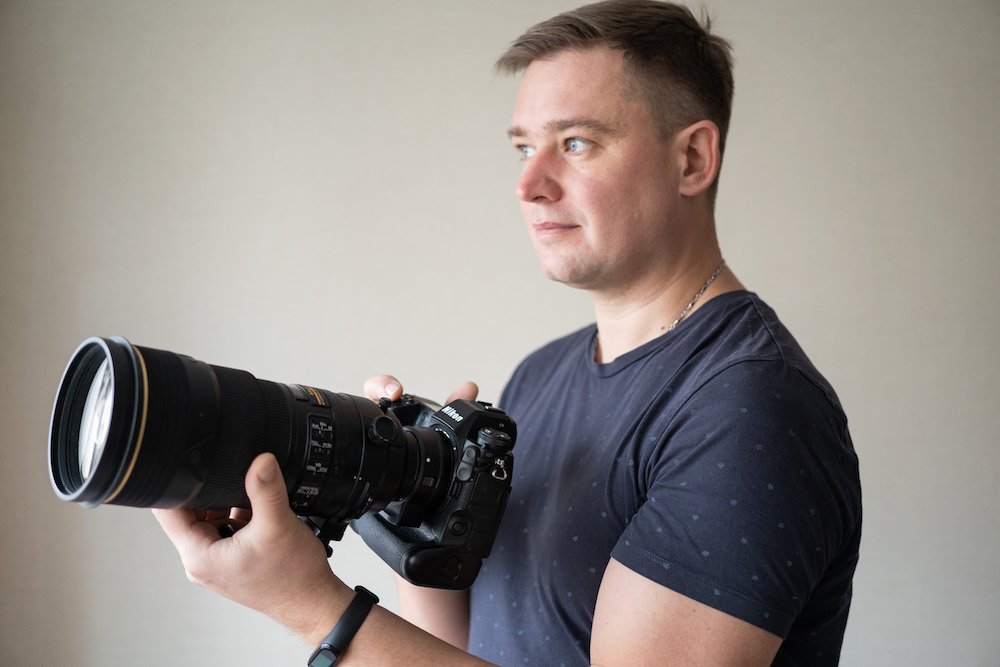
You may wonder:
- Is Nikon Z9 a good camera?
- Is Nikon Z9 worth buying in 2025?
You bet it is!
Nikon Z9 is one of the brightest new products of 2021.
A top reportage mirrorless camera with 8K video shooting, high-speed burst shooting, 45MP sensor and no mechanical shutter – it’s really powerful and unexpected.
George Politsarnov, a ProPhotos expert, received one of the Nikon Z9 pre-production samples for preparation of a large test in the “Week with an expert” format.
And he managed to find several difficult scenes in order to reveal the full potential of the camera.
This field test/review will be an extensive one.
George created a truly in-depth review of Nikon Z9 (originally published in the original language on ProPhotos) that will answer most of your questions that you knew about and didn’t know you had.
So, grab a coffee and enjoy!
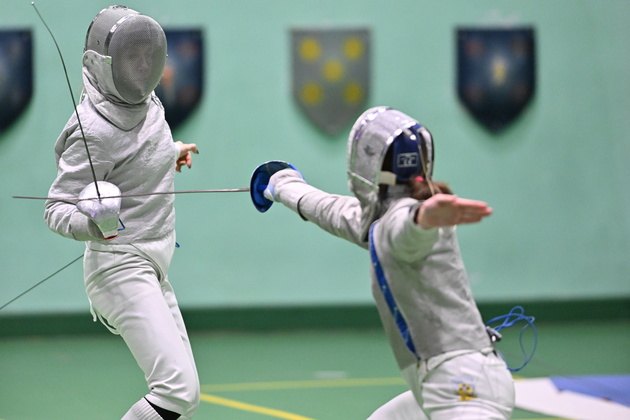
Z9 + AF-S 300mm f/2.8G IF ED VR II. Settings: ISO 5000, F2.8, 1/1600s, 300mm equiv.
Table of Contents
Nikon Z9 Key Features (Overview)
What’s New in Nikon Z9?
The easiest way to answer this question is in one word: everything. Well, almost everything. Some good traditions have been carefully preserved.
For example, the camera works with old batteries, is excellent “friends” with AF-S lenses through the FTZ adapter or the new FTZ II, has a proprietary menu structure and settings.
And of course, the case with an integrated vertical handle, as seen in all professional DSLRs.
At the heart of the Z9 is a new 45.7MP full-frame sensor.
Its secret lies in its multi-layer design with integrated memory. This solution allows for fast read speeds … so fast that the Nikon Z9 was the first professional camera without a mechanical shutter!
The sensor has no rolling shutter effect. The obvious advantages of this solution are silent operation and a minimum shutter speed of 1/32000s, as well as the complete exclusion of the possibility of micro-blurs due to the camera’s fault.

Mechanical shutters, which you can see on the camera, only protect the sensor when you turn off the camera and change lenses. They can be turned off.
Dust protection is also ensured by a double antistatic filter. (In previous models, the double filter was not used.)
The Nikon Z9, like the rest of the full-frame Z models, uses a sensor-shift stabilizer. It compensates for displacements in five axes, and you can witness its efficiency at 6 stops.
To unleash the high-speed qualities of the sensor, a new Expeed 7 processor was created for the Nikon Z9. The Expeed 7 alone is many times faster than even a couple of Expeed 6’s.
It allows you to shoot at a speed of up to 20 frames/s in RAW in full resolution (45.7 MP), and the use of CFexpress memory cards makes the buffer “infinite” (more than 1000 frames when using cards with a write speed of 1400 MB/s).
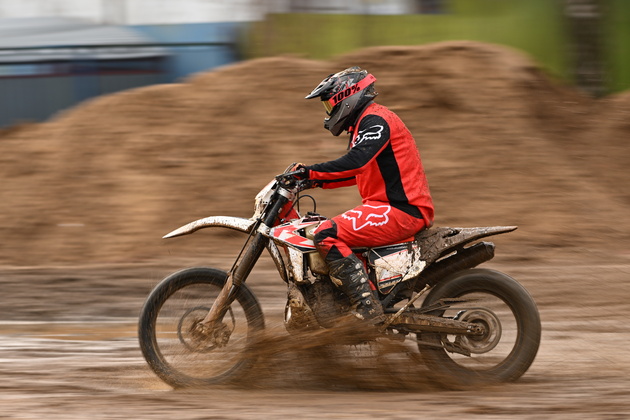
If you shoot in JPEG and limit yourself to 11 megapixels, then you can shoot at a frequency of 120 frames/s! (Obviously with autofocus and metering.)
Following the mechanical shutter, certain modules autofocus and metering went into retirement. The mirrorless design turned out to be much simpler compared to DSLRs.
All measurements are carried out exclusively on the sensor. Autofocus sensitivity reaches -8.5 EV. The phase detection points are located directly on the image sensor; 493 points are available for manual selection by the photographer.
The Nikon Z9 is also the brand’s first mirrorless camera to bring back the 3D tracking.

If the camera “sees” everything that happens in front of the lens, then it itself can choose the autofocus point.
For this, Nikon Z 9 implements a whole system of object recognition: faces, eyes, animals, people, vehicles … The camera can simultaneously track up to 9 objects.
The algorithms were created using machine learning technology and work perfectly in practice.
Brilliant!
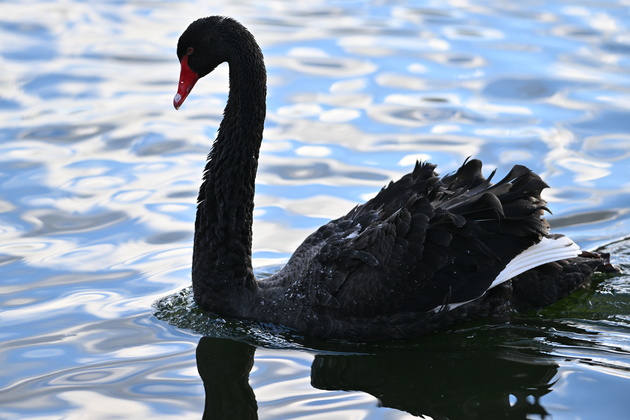
Finally, the main stumbling block between old school photographers and new technologies is the electronic viewfinder.
The combination of the sensor, processor and electronic viewfinder Nikon Z9 really works wonders: there is simply no display lag. The image is perceived absolutely alive.
(If you don’t remind the photographer that this is an OLED panel with a resolution of 3.69 million pixels, most likely they will not even think about it – I checked on several people.)
By the way, there is a little secret in the viewfinder.
It’s about its brightness reaching 3000 nits. Its resolution is far from the highest in its class, but the brightness is a record at the time of the announcement among all mirrorless cameras.
And since I mentioned the viewfinder, it’s time to talk about the screen. It’s a 3.2″ 4-axis tilting touchscreen LCD.
The display can be rotated 90 degrees when framing vertically to take angles from the lowest points. In addition, it tilts up and down, allowing you to find the optimal position in any situation.
Almost everything I wrote about above related to photography. But the Nikon Z 9 is more than just a camera. One turn of the lever and it turns into a professional 8K video-recorder.
At the time of this writing, the Nikon Z9 supports 8K video recording with H.265 compression at 25/30 frames per second. Naturally, at the same time, autofocus, all expoautomatics, and the stabilization system fully preserve the work.
There are no log gamma profiles, but there is a low-contrast Flat color profile, convenient for post-production. It is possible to shoot with 10-bit and 4:2:0.
If we talk about 4K, then the camera is very strong. The limit is 4K shooting at 120 fps, naturally with autofocus. 10-bit is also supported.
But you can go further. If you control appetites and lower the requirements to 50/60 frames/s, the Nikon Z 9 will allow you to record in 10-bit ProRes 422 HQ.
In terms of interface solutions, it should be noted separately implemented video mode with its own pool of saved settings. Switching is carried out by a lever under the thumb.
For the video mode, you can create a separate on-screen menu I (mentioned earlier), and reprogram the buttons, and, in general, configure everything in the camera.
A convenient and practical solution that clearly demonstrates the dual nature of this camera… or video camera?
Is Nikon Z9 Worth Buying? (Final Thoughts)
The Nikon Z9 is an iconic camera, the brand’s first truly reportage mirrorless, the first professional camera without a mechanical shutter.
And this is not just a demonstration of technical capabilities, but a camera ready for the most severe tests with unique functionality and a well-thought-out interface. I tested a pre-production sample, but didn’t even make me feel like it was a ‘raw’ product.
The Z9 has high-speed performance, which allows you to shoot up to 20fps in RAW at full 45.7MP or up to 120fps in JPEG at 11MP.
And these are not some special modes, full of restrictions. This is an absolutely normal operating mode for the camera, when autofocus confidently works out before each shot, there is no blackout or lag in the viewfinder, the buffer is almost infinite.
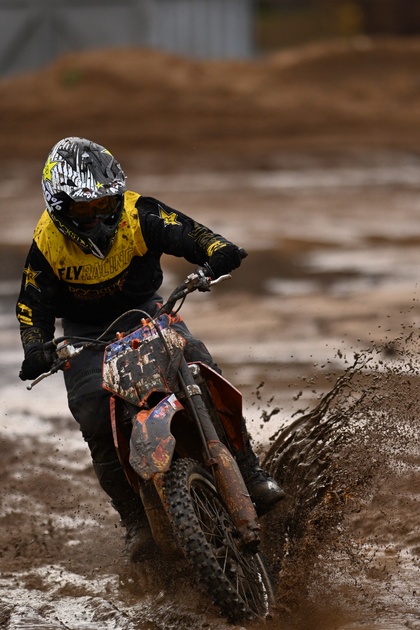
The autofocus system is smart and fast, to the point that a photographer can refuse to select a specific point or zone in 99% of cases – everything is done automatically.
And for the most difficult cases, there is a 3D tracking. In that case, it is enough for the camera to indicate the main object in the frame once.
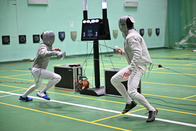
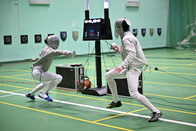
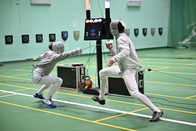
Oddly enough, the high resolution of the sensor practically didn’t limit the work at high ISO.
The real sensitivity range is limited to ISO 25600, but it is fully operational and applicable in practice. High quality pictures for large format printing can be shot up to ISO 12800. There is a good headroom in the shadows.

The Nikon Z9 has become a true hybrid camera, ready for both stills and videos.
The maximum resolution is 8K @ 30fps, but with a firmware update in 2022, 8K @ 60p in RAW will be available. You can shoot in 4K at 120fps, and at 60fps, 10-bit ProRes 422 HQ is already available.
Does the Nikon Z 9 have any downsides?
Yes, but they can be characterized by a simple phrase: there is no limit to perfection.
Pros
- very high speed of work in all aspects
- very accurate and fast autofocus
- the algorithms for recognizing the focusing object work perfectly
- stable and confident work with AF-S lenses
- almost infinite buffer with fast memory cards
- LiveView without lag and blackouts
- the ability to shoot up to 120 frames/s in JPEG
- distortion-free electronic shutter and flash support
- the possibility of absolutely silent shooting in any mode
- effective built-in image stabilization
- very high resolution
- working ISO up to 25600 units
- good headroom in the shadows in RAW
- thoughtful management
- 4-direction tilting touch screen
- very bright and high contrast viewfinder
- high speed wireless connections
- 8K video recording
- 4K video recording up to 120 fps
- good autonomy
Cons
- no support for gamma profiles in video
- small headroom in highlights in RAW
- at the time of the article’s release, the maximum video capabilities are not available
- quick, but not instantaneous switch on of the camera
Where to Buy Online
- Amazon
- BH Photo Video
- Adorama (financing may be available)
Nikon Z9 Review 2025: Your Thoughts?
This was an impressive review done by George, one of the top experts at ProPhotos.ru which hopefully answered your question “Is Nikon Z9 worth buying?”.
In case it wasn’t obvious, YES, it is!
Now we’d like to hear from YOU:
- What do you think about Nikon Z9 in 2025?
- If you’ve never held this gear, what stood out for you in this Nikon Z9 review?
- If you’ve already had a chance to play with this camera, please share your feedback! What else could you add to this?
Let us know in the comments below!
It’ll be come a top model for videos after the firmware update, which was in 2022. It is after this update that Nikon Z9 will be able to record 8K @ 60fps to the memory card in its own N-Raw format, which will be twice as efficient in volume as ProRes RAW.
At the time of this writing, the Nikon Z9 supports 8K video recording with H.265 compression at 25/30 frames per second. Naturally, at the same time, autofocus, all expoautomatics, and the stabilization system fully preserve the work.
There are no log gamma profiles, but there is a low-contrast Flat color profile, convenient for post-production. It is possible to shoot with 10-bit and 4:2:0.
If we talk about 4K, then the camera is very strong. The limit is 4K shooting at 120 fps, naturally with autofocus. 10-bit is also supported.
But you can go further. If you control appetites and lower the requirements to 50/60 frames/s, the Nikon Z 9 will allow you to record in 10-bit ProRes 422 HQ.
In terms of interface solutions, it should be noted separately implemented video mode with its own pool of saved settings. Switching is carried out by a lever under the thumb.
For the video mode, you can create a separate on-screen menu I (mentioned earlier), and reprogram the buttons, and, in general, configure everything in the camera.
A convenient and practical solution that clearly demonstrates the dual nature of this camera… or video camera?
Is Nikon Z9 Worth Buying? (Final Thoughts)
The Nikon Z9 is an iconic camera, the brand’s first truly reportage mirrorless, the first professional camera without a mechanical shutter.
And this is not just a demonstration of technical capabilities, but a camera ready for the most severe tests with unique functionality and a well-thought-out interface. I tested a pre-production sample, but didn’t even make me feel like it was a ‘raw’ product.
The Z9 has high-speed performance, which allows you to shoot up to 20fps in RAW at full 45.7MP or up to 120fps in JPEG at 11MP.
And these are not some special modes, full of restrictions. This is an absolutely normal operating mode for the camera, when autofocus confidently works out before each shot, there is no blackout or lag in the viewfinder, the buffer is almost infinite.

The autofocus system is smart and fast, to the point that a photographer can refuse to select a specific point or zone in 99% of cases – everything is done automatically.
And for the most difficult cases, there is a 3D tracking. In that case, it is enough for the camera to indicate the main object in the frame once.



Oddly enough, the high resolution of the sensor practically didn’t limit the work at high ISO.
The real sensitivity range is limited to ISO 25600, but it is fully operational and applicable in practice. High quality pictures for large format printing can be shot up to ISO 12800. There is a good headroom in the shadows.

The Nikon Z9 has become a true hybrid camera, ready for both stills and videos.
The maximum resolution is 8K @ 30fps, but with a firmware update in 2022, 8K @ 60p in RAW will be available. You can shoot in 4K at 120fps, and at 60fps, 10-bit ProRes 422 HQ is already available.
Does the Nikon Z 9 have any downsides?
Yes, but they can be characterized by a simple phrase: there is no limit to perfection.
Pros
- very high speed of work in all aspects
- very accurate and fast autofocus
- the algorithms for recognizing the focusing object work perfectly
- stable and confident work with AF-S lenses
- almost infinite buffer with fast memory cards
- LiveView without lag and blackouts
- the ability to shoot up to 120 frames/s in JPEG
- distortion-free electronic shutter and flash support
- the possibility of absolutely silent shooting in any mode
- effective built-in image stabilization
- very high resolution
- working ISO up to 25600 units
- good headroom in the shadows in RAW
- thoughtful management
- 4-direction tilting touch screen
- very bright and high contrast viewfinder
- high speed wireless connections
- 8K video recording
- 4K video recording up to 120 fps
- good autonomy
Cons
- no support for gamma profiles in video
- small headroom in highlights in RAW
- at the time of the article’s release, the maximum video capabilities are not available
- quick, but not instantaneous switch on of the camera
Where to Buy Online
- Amazon
- BH Photo Video
- Adorama (financing may be available)
Nikon Z9 Review 2025: Your Thoughts?
This was an impressive review done by George, one of the top experts at ProPhotos.ru which hopefully answered your question “Is Nikon Z9 worth buying?”.
In case it wasn’t obvious, YES, it is!
Now we’d like to hear from YOU:
- What do you think about Nikon Z9 in 2025?
- If you’ve never held this gear, what stood out for you in this Nikon Z9 review?
- If you’ve already had a chance to play with this camera, please share your feedback! What else could you add to this?
Let us know in the comments below!
It’ll be come a top model for videos after the firmware update, which was in 2022. It is after this update that Nikon Z9 will be able to record 8K @ 60fps to the memory card in its own N-Raw format, which will be twice as efficient in volume as ProRes RAW.
At the time of this writing, the Nikon Z9 supports 8K video recording with H.265 compression at 25/30 frames per second. Naturally, at the same time, autofocus, all expoautomatics, and the stabilization system fully preserve the work.
There are no log gamma profiles, but there is a low-contrast Flat color profile, convenient for post-production. It is possible to shoot with 10-bit and 4:2:0.
If we talk about 4K, then the camera is very strong. The limit is 4K shooting at 120 fps, naturally with autofocus. 10-bit is also supported.
But you can go further. If you control appetites and lower the requirements to 50/60 frames/s, the Nikon Z 9 will allow you to record in 10-bit ProRes 422 HQ.
In terms of interface solutions, it should be noted separately implemented video mode with its own pool of saved settings. Switching is carried out by a lever under the thumb.
For the video mode, you can create a separate on-screen menu I (mentioned earlier), and reprogram the buttons, and, in general, configure everything in the camera.
A convenient and practical solution that clearly demonstrates the dual nature of this camera… or video camera?
Is Nikon Z9 Worth Buying? (Final Thoughts)
The Nikon Z9 is an iconic camera, the brand’s first truly reportage mirrorless, the first professional camera without a mechanical shutter.
And this is not just a demonstration of technical capabilities, but a camera ready for the most severe tests with unique functionality and a well-thought-out interface. I tested a pre-production sample, but didn’t even make me feel like it was a ‘raw’ product.
The Z9 has high-speed performance, which allows you to shoot up to 20fps in RAW at full 45.7MP or up to 120fps in JPEG at 11MP.
And these are not some special modes, full of restrictions. This is an absolutely normal operating mode for the camera, when autofocus confidently works out before each shot, there is no blackout or lag in the viewfinder, the buffer is almost infinite.

The autofocus system is smart and fast, to the point that a photographer can refuse to select a specific point or zone in 99% of cases – everything is done automatically.
And for the most difficult cases, there is a 3D tracking. In that case, it is enough for the camera to indicate the main object in the frame once.



Oddly enough, the high resolution of the sensor practically didn’t limit the work at high ISO.
The real sensitivity range is limited to ISO 25600, but it is fully operational and applicable in practice. High quality pictures for large format printing can be shot up to ISO 12800. There is a good headroom in the shadows.

The Nikon Z9 has become a true hybrid camera, ready for both stills and videos.
The maximum resolution is 8K @ 30fps, but with a firmware update in 2022, 8K @ 60p in RAW will be available. You can shoot in 4K at 120fps, and at 60fps, 10-bit ProRes 422 HQ is already available.
Does the Nikon Z 9 have any downsides?
Yes, but they can be characterized by a simple phrase: there is no limit to perfection.
Pros
- very high speed of work in all aspects
- very accurate and fast autofocus
- the algorithms for recognizing the focusing object work perfectly
- stable and confident work with AF-S lenses
- almost infinite buffer with fast memory cards
- LiveView without lag and blackouts
- the ability to shoot up to 120 frames/s in JPEG
- distortion-free electronic shutter and flash support
- the possibility of absolutely silent shooting in any mode
- effective built-in image stabilization
- very high resolution
- working ISO up to 25600 units
- good headroom in the shadows in RAW
- thoughtful management
- 4-direction tilting touch screen
- very bright and high contrast viewfinder
- high speed wireless connections
- 8K video recording
- 4K video recording up to 120 fps
- good autonomy
Cons
- no support for gamma profiles in video
- small headroom in highlights in RAW
- at the time of the article’s release, the maximum video capabilities are not available
- quick, but not instantaneous switch on of the camera
Where to Buy Online
- Amazon
- BH Photo Video
- Adorama (financing may be available)
Nikon Z9 Review 2025: Your Thoughts?
This was an impressive review done by George, one of the top experts at ProPhotos.ru which hopefully answered your question “Is Nikon Z9 worth buying?”.
In case it wasn’t obvious, YES, it is!
Now we’d like to hear from YOU:
- What do you think about Nikon Z9 in 2025?
- If you’ve never held this gear, what stood out for you in this Nikon Z9 review?
- If you’ve already had a chance to play with this camera, please share your feedback! What else could you add to this?
Let us know in the comments below!
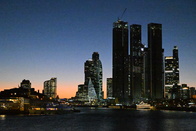
ISO 25600 exhibits both noticeable noise amplification, detail degradation, and color degradation in dark areas. It sounds scary, but in practice, ISO 25600 is workable if large-format printing is not required. For posting on the web or printing A4 or smaller pictures, these are suitable.
The expandable values ISO 51200 and 102400, unfortunately, can no longer boast about high technical quality and are more of a reserve in case of emergency.
All in all, Nikon Z9 pleasantly surprised, becoming one of the few cameras, the entire real ISO range of which can be called fully operational.
Dynamic Range
Traditionally for Nikon, the new Z9 demonstrates very good shadow margin in RAW. You can safely increase the exposure by three stops, revealing new details. The most interesting thing is that the noise level is almost not increased.
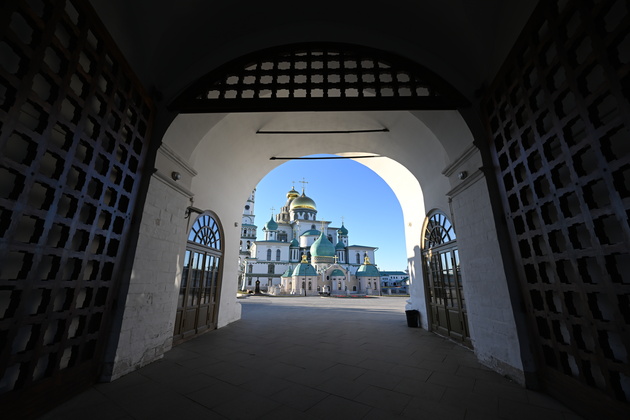
An alternative to this processing can be the use of Active D-Lighting when shooting contrasting scenes in JPEG.
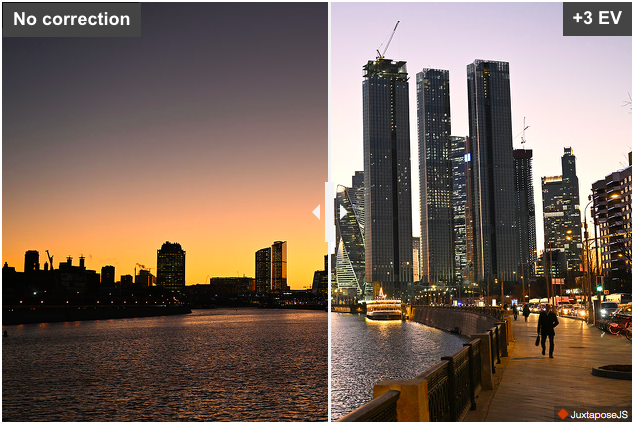
On the contrary, in the light areas the supply is very meager. You can save about one stop from overexposure. Decreasing the exposure further in the RAW converter doesn’t produce any results.
Nikon Z9 itself “knows” about this feature, so the automatic exposure control tries to prevent overexposure, sometimes slightly reducing the brightness of the picture. This exposure metering setting is traditional for many Nikon cameras and doesn’t raise any questions.
Electronic Shutter and Rolling Shutter Effect
The absence of a mechanical shutter is certainly a bold move by the Nikon Z9 developers. Photographers have enough complaints about modern electronic shutters. There are both rolling shutter and stripes when working with artificial light.
Have a look at the image below where the spokes of the motorcycle wheel spinning at high speed remain perfectly straight in the photo:
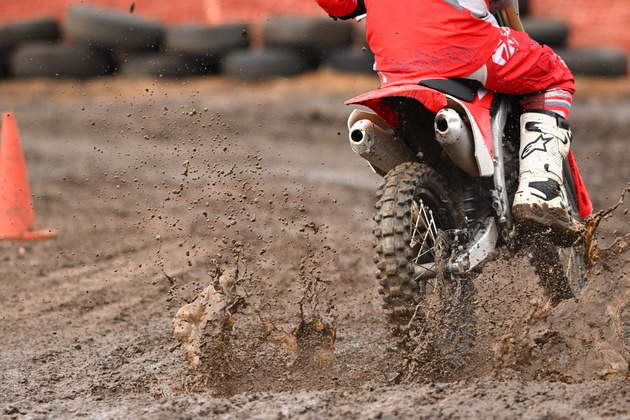
When shooting fencing with artificial lighting, I have never encountered the problem of stripes (moire) in the photo.
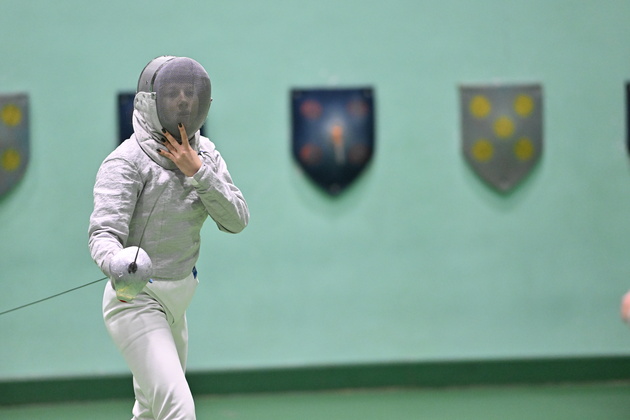
In a little more than a week of testing the Z9, I took about 20,000 frames with this camera, and didn’t encounter any of the voiced problems. The electronic shutter supports flash speeds up to 1/200 in normal mode and faster in high-speed sync mode.
That is, there are no restrictions compared to mechanical shutter cameras.
Nikon Z9 Video Shooting
A lot of attention has been paid to video shooting with Nikon Z 9.
Nikon understands that video is rapidly replacing static photography. They also understand that other manufacturers have made great strides in the direction of hybrid cameras. The Nikon Z9 specifications are impressive and clearly indicate that the camera should be a top-class hybrid model.
But there is one caveat:
It’ll be come a top model for videos after the firmware update, which was in 2022. It is after this update that Nikon Z9 will be able to record 8K @ 60fps to the memory card in its own N-Raw format, which will be twice as efficient in volume as ProRes RAW.
At the time of this writing, the Nikon Z9 supports 8K video recording with H.265 compression at 25/30 frames per second. Naturally, at the same time, autofocus, all expoautomatics, and the stabilization system fully preserve the work.
There are no log gamma profiles, but there is a low-contrast Flat color profile, convenient for post-production. It is possible to shoot with 10-bit and 4:2:0.
If we talk about 4K, then the camera is very strong. The limit is 4K shooting at 120 fps, naturally with autofocus. 10-bit is also supported.
But you can go further. If you control appetites and lower the requirements to 50/60 frames/s, the Nikon Z 9 will allow you to record in 10-bit ProRes 422 HQ.
In terms of interface solutions, it should be noted separately implemented video mode with its own pool of saved settings. Switching is carried out by a lever under the thumb.
For the video mode, you can create a separate on-screen menu I (mentioned earlier), and reprogram the buttons, and, in general, configure everything in the camera.
A convenient and practical solution that clearly demonstrates the dual nature of this camera… or video camera?
Is Nikon Z9 Worth Buying? (Final Thoughts)
The Nikon Z9 is an iconic camera, the brand’s first truly reportage mirrorless, the first professional camera without a mechanical shutter.
And this is not just a demonstration of technical capabilities, but a camera ready for the most severe tests with unique functionality and a well-thought-out interface. I tested a pre-production sample, but didn’t even make me feel like it was a ‘raw’ product.
The Z9 has high-speed performance, which allows you to shoot up to 20fps in RAW at full 45.7MP or up to 120fps in JPEG at 11MP.
And these are not some special modes, full of restrictions. This is an absolutely normal operating mode for the camera, when autofocus confidently works out before each shot, there is no blackout or lag in the viewfinder, the buffer is almost infinite.

The autofocus system is smart and fast, to the point that a photographer can refuse to select a specific point or zone in 99% of cases – everything is done automatically.
And for the most difficult cases, there is a 3D tracking. In that case, it is enough for the camera to indicate the main object in the frame once.



Oddly enough, the high resolution of the sensor practically didn’t limit the work at high ISO.
The real sensitivity range is limited to ISO 25600, but it is fully operational and applicable in practice. High quality pictures for large format printing can be shot up to ISO 12800. There is a good headroom in the shadows.

The Nikon Z9 has become a true hybrid camera, ready for both stills and videos.
The maximum resolution is 8K @ 30fps, but with a firmware update in 2022, 8K @ 60p in RAW will be available. You can shoot in 4K at 120fps, and at 60fps, 10-bit ProRes 422 HQ is already available.
Does the Nikon Z 9 have any downsides?
Yes, but they can be characterized by a simple phrase: there is no limit to perfection.
Pros
- very high speed of work in all aspects
- very accurate and fast autofocus
- the algorithms for recognizing the focusing object work perfectly
- stable and confident work with AF-S lenses
- almost infinite buffer with fast memory cards
- LiveView without lag and blackouts
- the ability to shoot up to 120 frames/s in JPEG
- distortion-free electronic shutter and flash support
- the possibility of absolutely silent shooting in any mode
- effective built-in image stabilization
- very high resolution
- working ISO up to 25600 units
- good headroom in the shadows in RAW
- thoughtful management
- 4-direction tilting touch screen
- very bright and high contrast viewfinder
- high speed wireless connections
- 8K video recording
- 4K video recording up to 120 fps
- good autonomy
Cons
- no support for gamma profiles in video
- small headroom in highlights in RAW
- at the time of the article’s release, the maximum video capabilities are not available
- quick, but not instantaneous switch on of the camera
Where to Buy Online
- Amazon
- BH Photo Video
- Adorama (financing may be available)
Nikon Z9 Review 2025: Your Thoughts?
This was an impressive review done by George, one of the top experts at ProPhotos.ru which hopefully answered your question “Is Nikon Z9 worth buying?”.
In case it wasn’t obvious, YES, it is!
Now we’d like to hear from YOU:
- What do you think about Nikon Z9 in 2025?
- If you’ve never held this gear, what stood out for you in this Nikon Z9 review?
- If you’ve already had a chance to play with this camera, please share your feedback! What else could you add to this?
Let us know in the comments below!

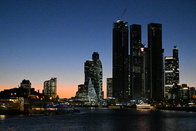

ISO 25600 exhibits both noticeable noise amplification, detail degradation, and color degradation in dark areas. It sounds scary, but in practice, ISO 25600 is workable if large-format printing is not required. For posting on the web or printing A4 or smaller pictures, these are suitable.
The expandable values ISO 51200 and 102400, unfortunately, can no longer boast about high technical quality and are more of a reserve in case of emergency.
All in all, Nikon Z9 pleasantly surprised, becoming one of the few cameras, the entire real ISO range of which can be called fully operational.
Dynamic Range
Traditionally for Nikon, the new Z9 demonstrates very good shadow margin in RAW. You can safely increase the exposure by three stops, revealing new details. The most interesting thing is that the noise level is almost not increased.

An alternative to this processing can be the use of Active D-Lighting when shooting contrasting scenes in JPEG.

On the contrary, in the light areas the supply is very meager. You can save about one stop from overexposure. Decreasing the exposure further in the RAW converter doesn’t produce any results.
Nikon Z9 itself “knows” about this feature, so the automatic exposure control tries to prevent overexposure, sometimes slightly reducing the brightness of the picture. This exposure metering setting is traditional for many Nikon cameras and doesn’t raise any questions.
Electronic Shutter and Rolling Shutter Effect
The absence of a mechanical shutter is certainly a bold move by the Nikon Z9 developers. Photographers have enough complaints about modern electronic shutters. There are both rolling shutter and stripes when working with artificial light.
Have a look at the image below where the spokes of the motorcycle wheel spinning at high speed remain perfectly straight in the photo:

When shooting fencing with artificial lighting, I have never encountered the problem of stripes (moire) in the photo.

In a little more than a week of testing the Z9, I took about 20,000 frames with this camera, and didn’t encounter any of the voiced problems. The electronic shutter supports flash speeds up to 1/200 in normal mode and faster in high-speed sync mode.
That is, there are no restrictions compared to mechanical shutter cameras.
Nikon Z9 Video Shooting
A lot of attention has been paid to video shooting with Nikon Z 9.
Nikon understands that video is rapidly replacing static photography. They also understand that other manufacturers have made great strides in the direction of hybrid cameras. The Nikon Z9 specifications are impressive and clearly indicate that the camera should be a top-class hybrid model.
But there is one caveat:
It’ll be come a top model for videos after the firmware update, which was in 2022. It is after this update that Nikon Z9 will be able to record 8K @ 60fps to the memory card in its own N-Raw format, which will be twice as efficient in volume as ProRes RAW.
At the time of this writing, the Nikon Z9 supports 8K video recording with H.265 compression at 25/30 frames per second. Naturally, at the same time, autofocus, all expoautomatics, and the stabilization system fully preserve the work.
There are no log gamma profiles, but there is a low-contrast Flat color profile, convenient for post-production. It is possible to shoot with 10-bit and 4:2:0.
If we talk about 4K, then the camera is very strong. The limit is 4K shooting at 120 fps, naturally with autofocus. 10-bit is also supported.
But you can go further. If you control appetites and lower the requirements to 50/60 frames/s, the Nikon Z 9 will allow you to record in 10-bit ProRes 422 HQ.
In terms of interface solutions, it should be noted separately implemented video mode with its own pool of saved settings. Switching is carried out by a lever under the thumb.
For the video mode, you can create a separate on-screen menu I (mentioned earlier), and reprogram the buttons, and, in general, configure everything in the camera.
A convenient and practical solution that clearly demonstrates the dual nature of this camera… or video camera?
Is Nikon Z9 Worth Buying? (Final Thoughts)
The Nikon Z9 is an iconic camera, the brand’s first truly reportage mirrorless, the first professional camera without a mechanical shutter.
And this is not just a demonstration of technical capabilities, but a camera ready for the most severe tests with unique functionality and a well-thought-out interface. I tested a pre-production sample, but didn’t even make me feel like it was a ‘raw’ product.
The Z9 has high-speed performance, which allows you to shoot up to 20fps in RAW at full 45.7MP or up to 120fps in JPEG at 11MP.
And these are not some special modes, full of restrictions. This is an absolutely normal operating mode for the camera, when autofocus confidently works out before each shot, there is no blackout or lag in the viewfinder, the buffer is almost infinite.

The autofocus system is smart and fast, to the point that a photographer can refuse to select a specific point or zone in 99% of cases – everything is done automatically.
And for the most difficult cases, there is a 3D tracking. In that case, it is enough for the camera to indicate the main object in the frame once.



Oddly enough, the high resolution of the sensor practically didn’t limit the work at high ISO.
The real sensitivity range is limited to ISO 25600, but it is fully operational and applicable in practice. High quality pictures for large format printing can be shot up to ISO 12800. There is a good headroom in the shadows.

The Nikon Z9 has become a true hybrid camera, ready for both stills and videos.
The maximum resolution is 8K @ 30fps, but with a firmware update in 2022, 8K @ 60p in RAW will be available. You can shoot in 4K at 120fps, and at 60fps, 10-bit ProRes 422 HQ is already available.
Does the Nikon Z 9 have any downsides?
Yes, but they can be characterized by a simple phrase: there is no limit to perfection.
Pros
- very high speed of work in all aspects
- very accurate and fast autofocus
- the algorithms for recognizing the focusing object work perfectly
- stable and confident work with AF-S lenses
- almost infinite buffer with fast memory cards
- LiveView without lag and blackouts
- the ability to shoot up to 120 frames/s in JPEG
- distortion-free electronic shutter and flash support
- the possibility of absolutely silent shooting in any mode
- effective built-in image stabilization
- very high resolution
- working ISO up to 25600 units
- good headroom in the shadows in RAW
- thoughtful management
- 4-direction tilting touch screen
- very bright and high contrast viewfinder
- high speed wireless connections
- 8K video recording
- 4K video recording up to 120 fps
- good autonomy
Cons
- no support for gamma profiles in video
- small headroom in highlights in RAW
- at the time of the article’s release, the maximum video capabilities are not available
- quick, but not instantaneous switch on of the camera
Where to Buy Online
- Amazon
- BH Photo Video
- Adorama (financing may be available)
Nikon Z9 Review 2025: Your Thoughts?
This was an impressive review done by George, one of the top experts at ProPhotos.ru which hopefully answered your question “Is Nikon Z9 worth buying?”.
In case it wasn’t obvious, YES, it is!
Now we’d like to hear from YOU:
- What do you think about Nikon Z9 in 2025?
- If you’ve never held this gear, what stood out for you in this Nikon Z9 review?
- If you’ve already had a chance to play with this camera, please share your feedback! What else could you add to this?
Let us know in the comments below!
Stabilization
The built-in 5-axis image stabilizer based on sensor shift is an important difference between the Nikon Z9 and the brand’s top DSLRs. Stabilizer performance is claimed to be 6 stops.
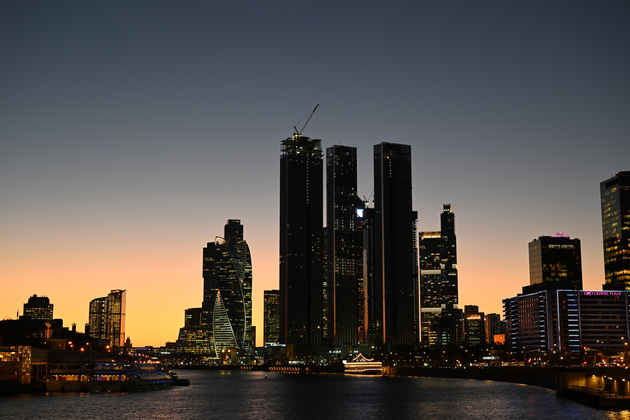
In my test, I was able to get sharp images with shutter speeds of up to 2 seconds with a wide-angle lens (21mm equivalent in DX mode) and up to 0.5 seconds with a 50mm lens in FX mode.

The effective operation of the stabilizer is clearly visible at shutter speeds up to ⅒ – ⅕ seconds. This is a really safe range in which the camera handles slower shutter speeds with confidence.
At shutter speeds of the order of ⅓ – ½, the number of sharp shots in the series decreases, and it is better to make the maximum possible number of takes.
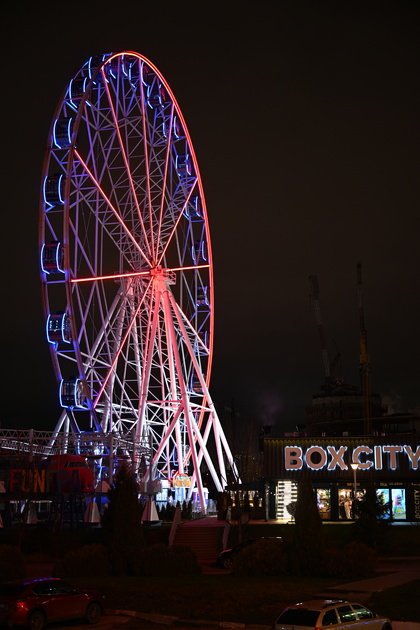
White Balance
Nikon Z9‘s automatic white balance has also been refined using machine learning algorithms.
The result is especially noticeable when shooting with the setting to preserve the lighting ambience. The camera doesn’t try to make white white, but carefully conveys those shades that the human’s eye saw.

Battery
The Nikon Z9 uses a new EN-EL18d battery, but is backward compatible with other EN-EL18 batteries. Batteries EN-EL18b and later support USB charging in the camera.
So there is no fundamental difference whether to charge the battery inside the camera or in an external charger.

At first glance, the declared resource of one charge is shockingly small: about 700 frames according to the CIPA method. But we shouldn’t believe everything we see written on paper.
The specifications also include a figure of 5310 for continuous shooting. And this is much closer to the truth!
Our test results confirm this figure. When working with high-speed shooting, it was possible to take up to 8000 frames in 4 hours, without draining even half the battery. And this is at near-zero temperatures outside!
Ergonomics and Control
The Nikon Z9 form factor is exactly the same as classic reporter DSLRs like the D6 or D5. No one is ready to abandon proven ergonomic solutions: neither the photographers nor the manufacturer.
The camera has an integrated vertical grip, and the main controls, including the control dials and the autofocus joystick, duplicated for the vertical grip.
Visually, the thickness of the case has also decreased, but the overall size has become less by only one and a half millimeters, primarily because of the grip of the handle.
The case is still made of magnesium alloy and has the necessary protection from dust and moisture for professional work. The instructions also officially stated the operating temperature range up to -10 degrees Celsius.
Most other mirrorless cameras only have a stated range of up to zero degrees.

The location of the controls is much closer to the mirrorless “brothers” than to the DSLR “grandparents”.
So, in Nikon Z9 there are no buttons left to the left of the screen, now they are scattered around the body. However, it won’t be difficult to get used to the new location: everything is thought out and logical.
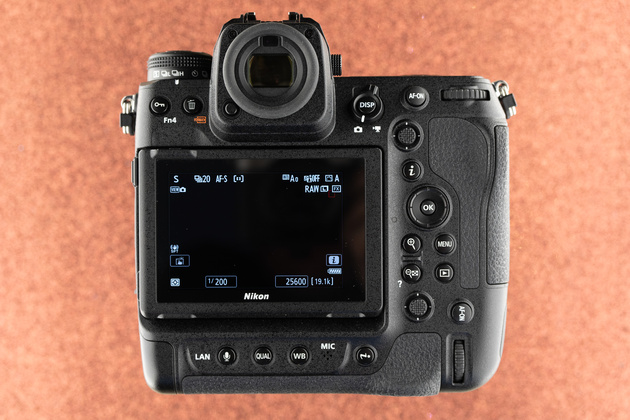
All buttons are large enough and spaced a great distance so that the camera is comfortable to work even with gloves. November provided us with the opportunity to check it out.
There’s even a dedicated touchscreen mode for camera operation in winter gloves:

We especially want to emphasize the i button, duplicated for vertical and horizontal grip. Don’t underestimate its importance.
It brings up a quick access on-screen menu, which the photographer or videographer can form himself from the 12 most popular functions and settings. Moreover, for the photo and video modes, the i menu is configured separately.
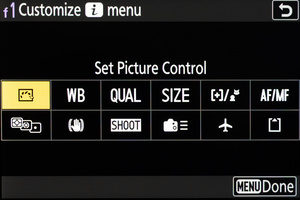
Most of the buttons can be reprogrammed, and there are a lot of them on Z9. For example, on the front panel alone, there are three programmable Fn buttons in the right-hand zone.
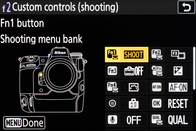
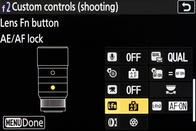

The control body responsible for controlling autofocus modes has been significantly changed. No more selectors! It’s just a button now. Press and select the autofocus mode using the control dials.
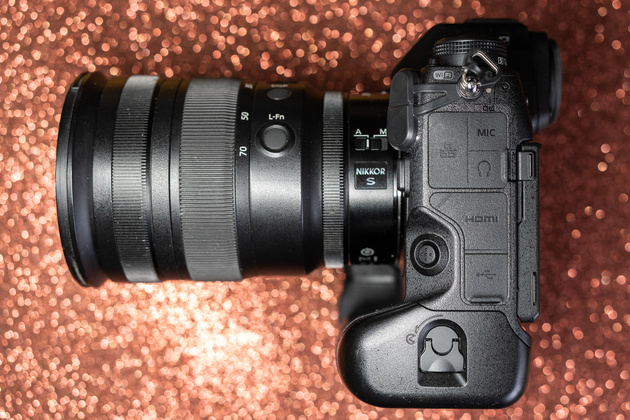
The shutter mode, burst mode, bracketing, flash and shooting mode settings are grouped to the left of the elevation of the viewfinder. It’s pretty easy for an experienced photographer to figure them out, even without instructions.
And on the right side of the top panel is a monochrome status display.
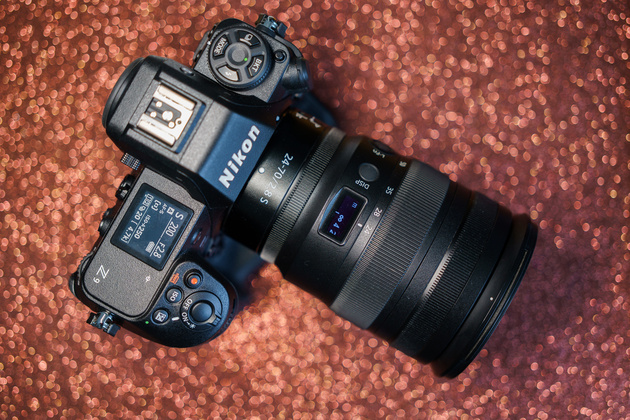
Frankly, during the test, I never looked at the monochrome display at the top. I could see all the necessary information in the viewfinder or on the main screen.
However, many professional photographers are used to traditional status displays and are not ready to give up on them. Though a small surprise awaits them: the display began to look different, as in many modern mirrorless cameras.
In terms of the interface solutions in the camera, everything is according to the principle that every little thing can be customized. The number of fine adjustments is simply off scale.



Even for displaying information on the display and viewfinder, there are several customizable templates. Obviously separate for photo and video.
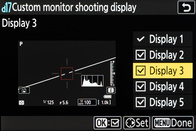

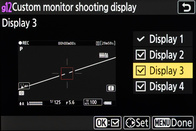
There are also some very interesting solutions.
For example, you can keep the button illumination always on. And the screen has a special mode of warm colors, which does not blind the photographer when shooting at night – the whole image is converted to black and red.

Concluding the section about the interface features, it should be noted that the menu has been updated.
I mean its structure has remained the same, but items that have only two positions – on or off – now have a visual and convenient “switch”, as in modern operating systems. All connection settings were placed in a separate tab, because in Z9 there are really a lot of them.
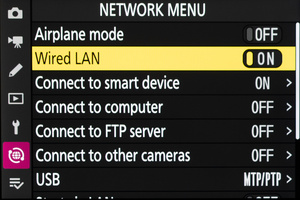
Input/Output
The set of Nikon Z9 connectors is traditional for professional cameras.
For example, there is a standard RJ-45 network with 1000BASE-T support. Videographers will appreciate the full-size Type A HDMI output (supports up to 8K resolution!), a phantom-powered stereo microphone input, and a headphone output. USB is a Type C connector with PowerDelivery support.

The front panel has a classic sync contact and a 10-pin proprietary remote control connector.
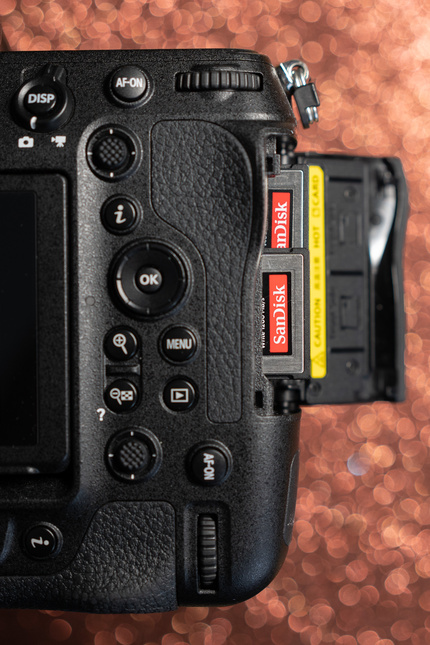
The camera supports the use of XQD (Type B) and CFexpress (Type B) memory cards. Both slots for memory cards are universal.
Network Interfaces
Nikon Z 9 has on board a Wi-Fi module with support for IEEE 802.11 b/g/n/a/ac standards. This is good news because photographers used to have to use an external WT6 transmitter.
Supported bands are 2.4 and 5 GHz. Output power is declared at 8.4 dBm for 2.4 GHz and 9.0 dBm for 5 GHz. That is, the Wi-Fi module is noticeably more powerful than, for example, in the Nikon Z7 II.
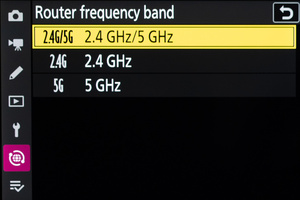
In practice, the increase in Wi-Fi performance is clearly visible.
For example, by connecting the camera to a smartphone using the SnapBridge app, I easily deconstructed a huge shot of several thousand frames and chose the most effective shots. Even working on a relatively powerful computer with a fast card reader, I spent more time on selection.

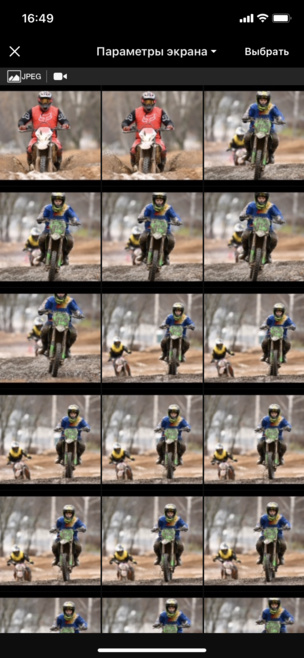
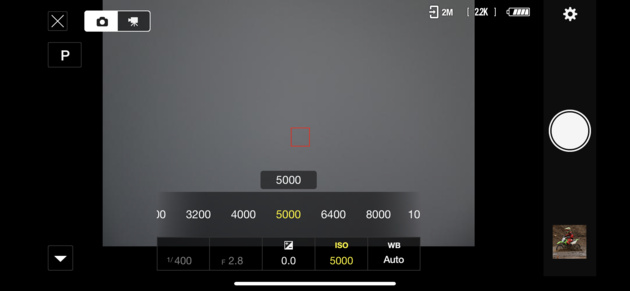
Bluetooth supports specification version 5.0 and has a declared power of 2.9 dBm (1.4 dBm for Bluetooth Low Energy).
Nikon has seriously updated the software for the release of this camera.
Nikon Z9 will work with the NX Field app, which allows you to control multiple cameras remotely from your smartphone, synchronize the shutter release. The NX MobileAir utility is on the way, which will allow you to connect a smartphone and a camera with a cable for fast transfer of images via 4G or 5G, including in the background.

The Nikon Z9 body has a built-in GPS/GLONASS /QZSS receiver.
You can limit yourself to a simple setting of the exact time according to satellite signals, or you can record geodata for each frame taken and keep a log.
Image Quality
The conclusions about the image quality were made on the basis of working with a pre-production sample of the camera and firmware version 1.00. Serial samples may vary.
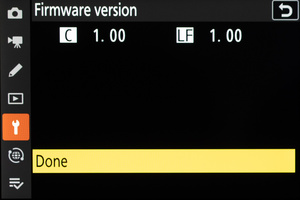
Detail
We have already been able to evaluate the potential of the optics of the Nikon Z mirrorless system in our other tests. Top lens models delight with a sharp, ringing picture.
So on a 45-megapixel Nikon Z 9 sensor, they 100% expose their potential. The detail in the pictures is sufficient not only for large-format printing, but also for a very daring cropping.
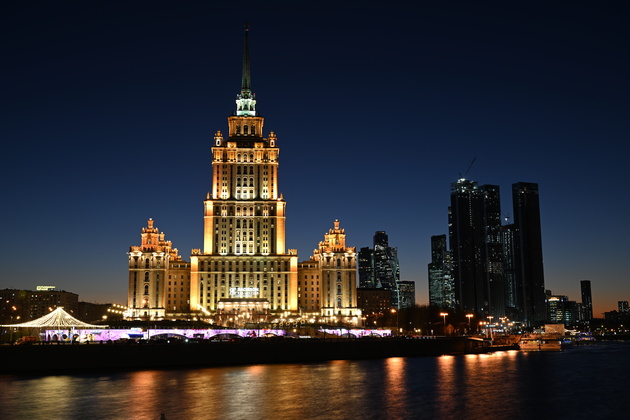
The “excess” of detail can be used up in a very practical way – for shooting with a crop in DX mode (for example, when there is not enough focal length).
Photos are taken with a resolution of 19.4 megapixels, which is sufficient for most tasks. I shot almost all of the motocross material this way, because it was not always possible to get closer.

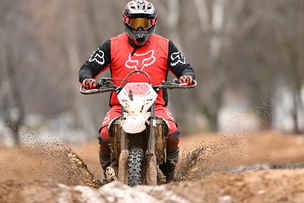
High ISO
For a reportage camera, 45MP is high resolution even by the standards of 2021.
On the one hand, it is quite understandable where this figure came from: it is dictated by the 8K video shooting implemented in the Z9.
On the other hand, won’t these 45 megapixels make too much noise?
The intrigue is reinforced by the fact that the sensor description doesn’t mention the back-illumination technology, which is so fashionable now… So we wait for the evening time, put the camera on a reliable tripod and shoot the test at all ISO values.
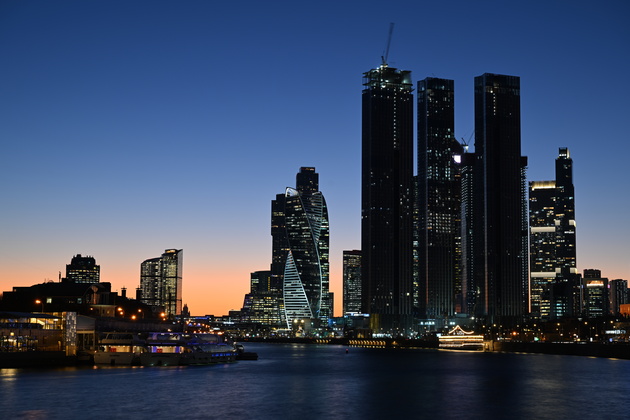
The minimum expandable value for the Nikon Z9 is ISO 32, which allows long shutter speeds.
At the same time, the dynamic range in the highlights is slightly reduced, but in general, ISO 32 is fully operational, and, moreover, it is absolutely free of noise. The detail of the picture is very high, and the picture looks absolutely smooth.

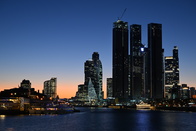
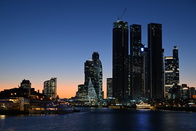
The lower “real” value for light sensitivity is ISO 64. It is also impeccable in terms of technical quality. The situation is similar at both ISO 100 and ISO 200.
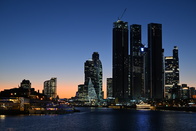

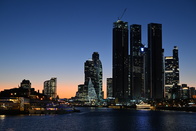
The ideal smoothness of the picture gradually begins to give way to fine monochrome noise after ISO 400. However, up to ISO 1600 inclusive, it remains almost invisible, given the initially high image resolution.
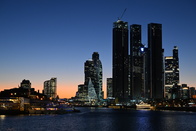

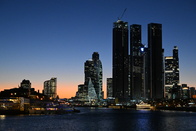
At ISO 3200, the first clumps of noise appear in the shadows, which are noticeable when the photo is enlarged, but don’t have a decisive effect on the final quality. Such frames can easily withstand large-format printing over A3.
At ISO 6400, contrast in the shadows begins to decrease, but this ISO value remains fully functional.
And only ISO 12800 for the first time makes the photographer think about the balance between light sensitivity and technical quality: the level of noise rises, details and midtones in the shadows degrade. However, even this ISO will allow you to print images in A4 or even A3 without additional processing.



ISO 25600 exhibits both noticeable noise amplification, detail degradation, and color degradation in dark areas. It sounds scary, but in practice, ISO 25600 is workable if large-format printing is not required. For posting on the web or printing A4 or smaller pictures, these are suitable.
The expandable values ISO 51200 and 102400, unfortunately, can no longer boast about high technical quality and are more of a reserve in case of emergency.
All in all, Nikon Z9 pleasantly surprised, becoming one of the few cameras, the entire real ISO range of which can be called fully operational.
Dynamic Range
Traditionally for Nikon, the new Z9 demonstrates very good shadow margin in RAW. You can safely increase the exposure by three stops, revealing new details. The most interesting thing is that the noise level is almost not increased.

An alternative to this processing can be the use of Active D-Lighting when shooting contrasting scenes in JPEG.

On the contrary, in the light areas the supply is very meager. You can save about one stop from overexposure. Decreasing the exposure further in the RAW converter doesn’t produce any results.
Nikon Z9 itself “knows” about this feature, so the automatic exposure control tries to prevent overexposure, sometimes slightly reducing the brightness of the picture. This exposure metering setting is traditional for many Nikon cameras and doesn’t raise any questions.
Electronic Shutter and Rolling Shutter Effect
The absence of a mechanical shutter is certainly a bold move by the Nikon Z9 developers. Photographers have enough complaints about modern electronic shutters. There are both rolling shutter and stripes when working with artificial light.
Have a look at the image below where the spokes of the motorcycle wheel spinning at high speed remain perfectly straight in the photo:

When shooting fencing with artificial lighting, I have never encountered the problem of stripes (moire) in the photo.

In a little more than a week of testing the Z9, I took about 20,000 frames with this camera, and didn’t encounter any of the voiced problems. The electronic shutter supports flash speeds up to 1/200 in normal mode and faster in high-speed sync mode.
That is, there are no restrictions compared to mechanical shutter cameras.
Nikon Z9 Video Shooting
A lot of attention has been paid to video shooting with Nikon Z 9.
Nikon understands that video is rapidly replacing static photography. They also understand that other manufacturers have made great strides in the direction of hybrid cameras. The Nikon Z9 specifications are impressive and clearly indicate that the camera should be a top-class hybrid model.
But there is one caveat:
It’ll be come a top model for videos after the firmware update, which was in 2022. It is after this update that Nikon Z9 will be able to record 8K @ 60fps to the memory card in its own N-Raw format, which will be twice as efficient in volume as ProRes RAW.
At the time of this writing, the Nikon Z9 supports 8K video recording with H.265 compression at 25/30 frames per second. Naturally, at the same time, autofocus, all expoautomatics, and the stabilization system fully preserve the work.
There are no log gamma profiles, but there is a low-contrast Flat color profile, convenient for post-production. It is possible to shoot with 10-bit and 4:2:0.
If we talk about 4K, then the camera is very strong. The limit is 4K shooting at 120 fps, naturally with autofocus. 10-bit is also supported.
But you can go further. If you control appetites and lower the requirements to 50/60 frames/s, the Nikon Z 9 will allow you to record in 10-bit ProRes 422 HQ.
In terms of interface solutions, it should be noted separately implemented video mode with its own pool of saved settings. Switching is carried out by a lever under the thumb.
For the video mode, you can create a separate on-screen menu I (mentioned earlier), and reprogram the buttons, and, in general, configure everything in the camera.
A convenient and practical solution that clearly demonstrates the dual nature of this camera… or video camera?
Is Nikon Z9 Worth Buying? (Final Thoughts)
The Nikon Z9 is an iconic camera, the brand’s first truly reportage mirrorless, the first professional camera without a mechanical shutter.
And this is not just a demonstration of technical capabilities, but a camera ready for the most severe tests with unique functionality and a well-thought-out interface. I tested a pre-production sample, but didn’t even make me feel like it was a ‘raw’ product.
The Z9 has high-speed performance, which allows you to shoot up to 20fps in RAW at full 45.7MP or up to 120fps in JPEG at 11MP.
And these are not some special modes, full of restrictions. This is an absolutely normal operating mode for the camera, when autofocus confidently works out before each shot, there is no blackout or lag in the viewfinder, the buffer is almost infinite.

The autofocus system is smart and fast, to the point that a photographer can refuse to select a specific point or zone in 99% of cases – everything is done automatically.
And for the most difficult cases, there is a 3D tracking. In that case, it is enough for the camera to indicate the main object in the frame once.



Oddly enough, the high resolution of the sensor practically didn’t limit the work at high ISO.
The real sensitivity range is limited to ISO 25600, but it is fully operational and applicable in practice. High quality pictures for large format printing can be shot up to ISO 12800. There is a good headroom in the shadows.

The Nikon Z9 has become a true hybrid camera, ready for both stills and videos.
The maximum resolution is 8K @ 30fps, but with a firmware update in 2022, 8K @ 60p in RAW will be available. You can shoot in 4K at 120fps, and at 60fps, 10-bit ProRes 422 HQ is already available.
Does the Nikon Z 9 have any downsides?
Yes, but they can be characterized by a simple phrase: there is no limit to perfection.
Pros
- very high speed of work in all aspects
- very accurate and fast autofocus
- the algorithms for recognizing the focusing object work perfectly
- stable and confident work with AF-S lenses
- almost infinite buffer with fast memory cards
- LiveView without lag and blackouts
- the ability to shoot up to 120 frames/s in JPEG
- distortion-free electronic shutter and flash support
- the possibility of absolutely silent shooting in any mode
- effective built-in image stabilization
- very high resolution
- working ISO up to 25600 units
- good headroom in the shadows in RAW
- thoughtful management
- 4-direction tilting touch screen
- very bright and high contrast viewfinder
- high speed wireless connections
- 8K video recording
- 4K video recording up to 120 fps
- good autonomy
Cons
- no support for gamma profiles in video
- small headroom in highlights in RAW
- at the time of the article’s release, the maximum video capabilities are not available
- quick, but not instantaneous switch on of the camera
Where to Buy Online
- Amazon
- BH Photo Video
- Adorama (financing may be available)
Nikon Z9 Review 2025: Your Thoughts?
This was an impressive review done by George, one of the top experts at ProPhotos.ru which hopefully answered your question “Is Nikon Z9 worth buying?”.
In case it wasn’t obvious, YES, it is!
Now we’d like to hear from YOU:
- What do you think about Nikon Z9 in 2025?
- If you’ve never held this gear, what stood out for you in this Nikon Z9 review?
- If you’ve already had a chance to play with this camera, please share your feedback! What else could you add to this?
Let us know in the comments below!
Nikon Z9 in Action
Autofocus
The Nikon Z9 autofocus system is perhaps the main reason why it was worth abandoning the DSLR design of the camera. The camera has to see with each of its 45.7 million pixels what is happening in front of it, and focus itself, and not bother the photographer. And Nikon Z9 can do it.
But let’s start from the very beginning…
Focusing is carried out directly on the sensor according to the hybrid principle (phase + contrast AF). System sensitivity is -6.5 to +19 EV in “normal” mode, with the lower limit extended to -8.5 EV with Starlight View at ISO 100, f/1.2.

The specs list 493 AF points, but you need to be careful here: we are talking about the number of positions of the manually selected AF point. Naturally, the camera uses a much larger number of sensors that cover most of the frame.
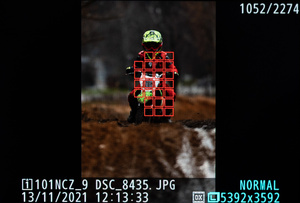
Throughout my testing, I literally had to select the autofocus area manually several times.
In most situations, it is enough to turn on the wide AF area, and the camera itself will determine the main subject. A recognition system created using machine learning technology helps it in this.
In the menu you can choose what exactly you are going to shoot: people and animals, or vehicles. In the second case, we are talking about sports scenes: car rallies, motorcycle races, and the like.

During the test, I gave the camera the opportunity to work with completely different subjects. And the Z9 deal with all of them perfectly.
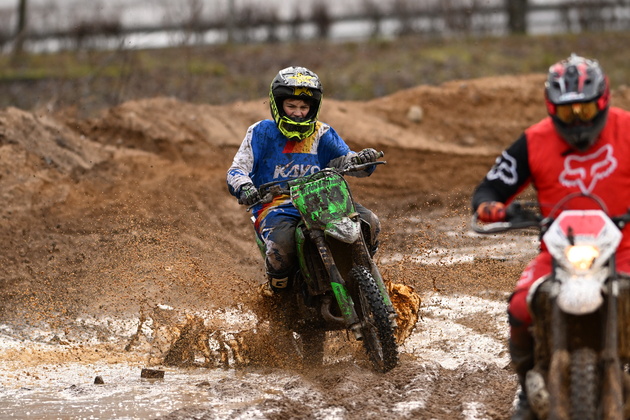
Let’s start with the most familiar: the face and eyes of people.
Thanks to the high resolution of the sensor, the autofocus can find not only faces, but also eyes on very small planes. And that’s impressive!


The helmet on the face doesn’t bother the recognition system at all. If the eyes are not visible, the camera knows for sure: in front of it is the person’s head. The focus will be exactly where you need it.

With animals and birds, too, no problem. If the bird is looking at you from the front, the focus will be on the eye, not on the beak.
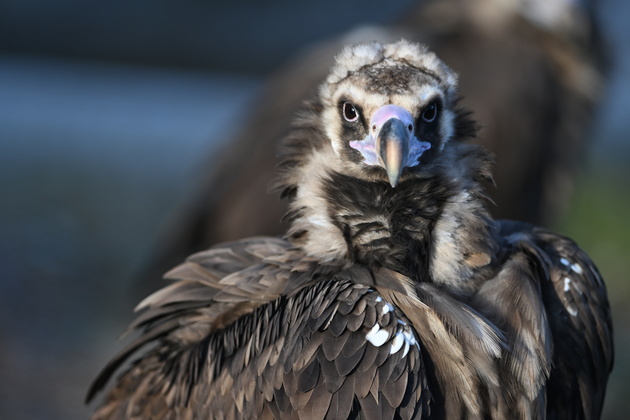
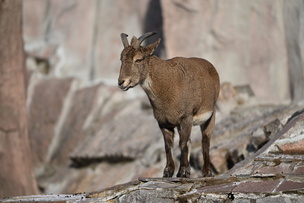

I always try to put the athlete and his emotions first.
But if you turn off face and eye detection, the camera focuses confidently, for example, on a motorcycle and its details. In addition, you can always set the AF point manually by touching the screen or using the joystick.
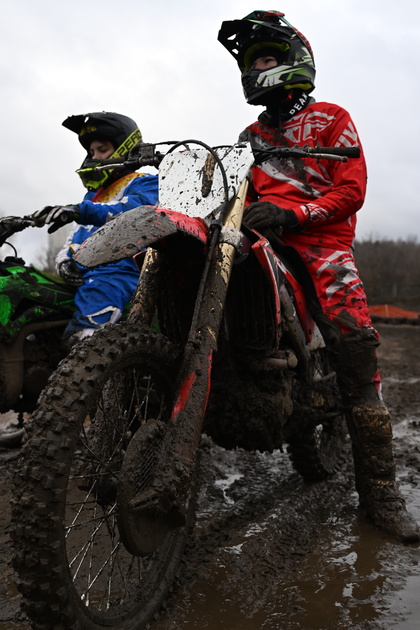
I would also like to mention 3D tracking, which first appeared in Nikon mirrorless cameras.
The function is well known to owners of Nikon DSLR cameras. It works like this: the autofocus area is preselected, which is aligned with the main subject. After half-pressing the shutter button, the camera continues to track the selected subject, using all its intelligence.
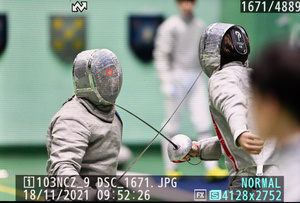
It would seem that this is an unnecessary complication, because there is automatic object recognition. But try shooting under conditions where two or more of the same objects appear in the frame. For example, uniformed athletes.
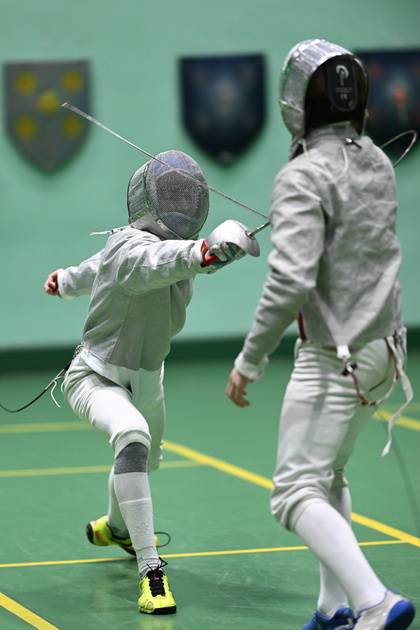
In the 3D tracking mode, I shot fencing, choosing in advance the athlete on whom the focus should be. And then the camera continuously kept him in focus until the shutter button was pressed (at least throughout the entire fencing fight).

During the test, I used both the Z-lenses created for the mirrorless mount and the Nikon AF-S 300mm f/2.8G IF ED VR II from a DSLR camera mounted via an FTZ adapter. I had no complaints about speed and accuracy using either glass.
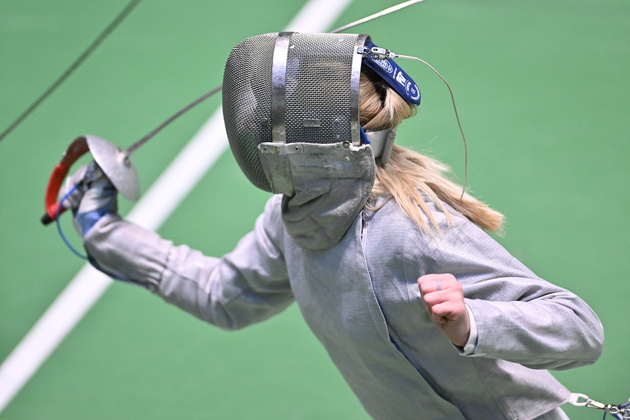
Stabilization
The built-in 5-axis image stabilizer based on sensor shift is an important difference between the Nikon Z9 and the brand’s top DSLRs. Stabilizer performance is claimed to be 6 stops.

In my test, I was able to get sharp images with shutter speeds of up to 2 seconds with a wide-angle lens (21mm equivalent in DX mode) and up to 0.5 seconds with a 50mm lens in FX mode.

The effective operation of the stabilizer is clearly visible at shutter speeds up to ⅒ – ⅕ seconds. This is a really safe range in which the camera handles slower shutter speeds with confidence.
At shutter speeds of the order of ⅓ – ½, the number of sharp shots in the series decreases, and it is better to make the maximum possible number of takes.

White Balance
Nikon Z9‘s automatic white balance has also been refined using machine learning algorithms.
The result is especially noticeable when shooting with the setting to preserve the lighting ambience. The camera doesn’t try to make white white, but carefully conveys those shades that the human’s eye saw.

Battery
The Nikon Z9 uses a new EN-EL18d battery, but is backward compatible with other EN-EL18 batteries. Batteries EN-EL18b and later support USB charging in the camera.
So there is no fundamental difference whether to charge the battery inside the camera or in an external charger.

At first glance, the declared resource of one charge is shockingly small: about 700 frames according to the CIPA method. But we shouldn’t believe everything we see written on paper.
The specifications also include a figure of 5310 for continuous shooting. And this is much closer to the truth!
Our test results confirm this figure. When working with high-speed shooting, it was possible to take up to 8000 frames in 4 hours, without draining even half the battery. And this is at near-zero temperatures outside!
Ergonomics and Control
The Nikon Z9 form factor is exactly the same as classic reporter DSLRs like the D6 or D5. No one is ready to abandon proven ergonomic solutions: neither the photographers nor the manufacturer.
The camera has an integrated vertical grip, and the main controls, including the control dials and the autofocus joystick, duplicated for the vertical grip.
Visually, the thickness of the case has also decreased, but the overall size has become less by only one and a half millimeters, primarily because of the grip of the handle.
The case is still made of magnesium alloy and has the necessary protection from dust and moisture for professional work. The instructions also officially stated the operating temperature range up to -10 degrees Celsius.
Most other mirrorless cameras only have a stated range of up to zero degrees.

The location of the controls is much closer to the mirrorless “brothers” than to the DSLR “grandparents”.
So, in Nikon Z9 there are no buttons left to the left of the screen, now they are scattered around the body. However, it won’t be difficult to get used to the new location: everything is thought out and logical.

All buttons are large enough and spaced a great distance so that the camera is comfortable to work even with gloves. November provided us with the opportunity to check it out.
There’s even a dedicated touchscreen mode for camera operation in winter gloves:

We especially want to emphasize the i button, duplicated for vertical and horizontal grip. Don’t underestimate its importance.
It brings up a quick access on-screen menu, which the photographer or videographer can form himself from the 12 most popular functions and settings. Moreover, for the photo and video modes, the i menu is configured separately.

Most of the buttons can be reprogrammed, and there are a lot of them on Z9. For example, on the front panel alone, there are three programmable Fn buttons in the right-hand zone.



The control body responsible for controlling autofocus modes has been significantly changed. No more selectors! It’s just a button now. Press and select the autofocus mode using the control dials.

The shutter mode, burst mode, bracketing, flash and shooting mode settings are grouped to the left of the elevation of the viewfinder. It’s pretty easy for an experienced photographer to figure them out, even without instructions.
And on the right side of the top panel is a monochrome status display.

Frankly, during the test, I never looked at the monochrome display at the top. I could see all the necessary information in the viewfinder or on the main screen.
However, many professional photographers are used to traditional status displays and are not ready to give up on them. Though a small surprise awaits them: the display began to look different, as in many modern mirrorless cameras.
In terms of the interface solutions in the camera, everything is according to the principle that every little thing can be customized. The number of fine adjustments is simply off scale.



Even for displaying information on the display and viewfinder, there are several customizable templates. Obviously separate for photo and video.



There are also some very interesting solutions.
For example, you can keep the button illumination always on. And the screen has a special mode of warm colors, which does not blind the photographer when shooting at night – the whole image is converted to black and red.

Concluding the section about the interface features, it should be noted that the menu has been updated.
I mean its structure has remained the same, but items that have only two positions – on or off – now have a visual and convenient “switch”, as in modern operating systems. All connection settings were placed in a separate tab, because in Z9 there are really a lot of them.

Input/Output
The set of Nikon Z9 connectors is traditional for professional cameras.
For example, there is a standard RJ-45 network with 1000BASE-T support. Videographers will appreciate the full-size Type A HDMI output (supports up to 8K resolution!), a phantom-powered stereo microphone input, and a headphone output. USB is a Type C connector with PowerDelivery support.

The front panel has a classic sync contact and a 10-pin proprietary remote control connector.

The camera supports the use of XQD (Type B) and CFexpress (Type B) memory cards. Both slots for memory cards are universal.
Network Interfaces
Nikon Z 9 has on board a Wi-Fi module with support for IEEE 802.11 b/g/n/a/ac standards. This is good news because photographers used to have to use an external WT6 transmitter.
Supported bands are 2.4 and 5 GHz. Output power is declared at 8.4 dBm for 2.4 GHz and 9.0 dBm for 5 GHz. That is, the Wi-Fi module is noticeably more powerful than, for example, in the Nikon Z7 II.

In practice, the increase in Wi-Fi performance is clearly visible.
For example, by connecting the camera to a smartphone using the SnapBridge app, I easily deconstructed a huge shot of several thousand frames and chose the most effective shots. Even working on a relatively powerful computer with a fast card reader, I spent more time on selection.



Bluetooth supports specification version 5.0 and has a declared power of 2.9 dBm (1.4 dBm for Bluetooth Low Energy).
Nikon has seriously updated the software for the release of this camera.
Nikon Z9 will work with the NX Field app, which allows you to control multiple cameras remotely from your smartphone, synchronize the shutter release. The NX MobileAir utility is on the way, which will allow you to connect a smartphone and a camera with a cable for fast transfer of images via 4G or 5G, including in the background.

The Nikon Z9 body has a built-in GPS/GLONASS /QZSS receiver.
You can limit yourself to a simple setting of the exact time according to satellite signals, or you can record geodata for each frame taken and keep a log.
Image Quality
The conclusions about the image quality were made on the basis of working with a pre-production sample of the camera and firmware version 1.00. Serial samples may vary.

Detail
We have already been able to evaluate the potential of the optics of the Nikon Z mirrorless system in our other tests. Top lens models delight with a sharp, ringing picture.
So on a 45-megapixel Nikon Z 9 sensor, they 100% expose their potential. The detail in the pictures is sufficient not only for large-format printing, but also for a very daring cropping.

The “excess” of detail can be used up in a very practical way – for shooting with a crop in DX mode (for example, when there is not enough focal length).
Photos are taken with a resolution of 19.4 megapixels, which is sufficient for most tasks. I shot almost all of the motocross material this way, because it was not always possible to get closer.


High ISO
For a reportage camera, 45MP is high resolution even by the standards of 2021.
On the one hand, it is quite understandable where this figure came from: it is dictated by the 8K video shooting implemented in the Z9.
On the other hand, won’t these 45 megapixels make too much noise?
The intrigue is reinforced by the fact that the sensor description doesn’t mention the back-illumination technology, which is so fashionable now… So we wait for the evening time, put the camera on a reliable tripod and shoot the test at all ISO values.

The minimum expandable value for the Nikon Z9 is ISO 32, which allows long shutter speeds.
At the same time, the dynamic range in the highlights is slightly reduced, but in general, ISO 32 is fully operational, and, moreover, it is absolutely free of noise. The detail of the picture is very high, and the picture looks absolutely smooth.



The lower “real” value for light sensitivity is ISO 64. It is also impeccable in terms of technical quality. The situation is similar at both ISO 100 and ISO 200.



The ideal smoothness of the picture gradually begins to give way to fine monochrome noise after ISO 400. However, up to ISO 1600 inclusive, it remains almost invisible, given the initially high image resolution.



At ISO 3200, the first clumps of noise appear in the shadows, which are noticeable when the photo is enlarged, but don’t have a decisive effect on the final quality. Such frames can easily withstand large-format printing over A3.
At ISO 6400, contrast in the shadows begins to decrease, but this ISO value remains fully functional.
And only ISO 12800 for the first time makes the photographer think about the balance between light sensitivity and technical quality: the level of noise rises, details and midtones in the shadows degrade. However, even this ISO will allow you to print images in A4 or even A3 without additional processing.



ISO 25600 exhibits both noticeable noise amplification, detail degradation, and color degradation in dark areas. It sounds scary, but in practice, ISO 25600 is workable if large-format printing is not required. For posting on the web or printing A4 or smaller pictures, these are suitable.
The expandable values ISO 51200 and 102400, unfortunately, can no longer boast about high technical quality and are more of a reserve in case of emergency.
All in all, Nikon Z9 pleasantly surprised, becoming one of the few cameras, the entire real ISO range of which can be called fully operational.
Dynamic Range
Traditionally for Nikon, the new Z9 demonstrates very good shadow margin in RAW. You can safely increase the exposure by three stops, revealing new details. The most interesting thing is that the noise level is almost not increased.

An alternative to this processing can be the use of Active D-Lighting when shooting contrasting scenes in JPEG.

On the contrary, in the light areas the supply is very meager. You can save about one stop from overexposure. Decreasing the exposure further in the RAW converter doesn’t produce any results.
Nikon Z9 itself “knows” about this feature, so the automatic exposure control tries to prevent overexposure, sometimes slightly reducing the brightness of the picture. This exposure metering setting is traditional for many Nikon cameras and doesn’t raise any questions.
Electronic Shutter and Rolling Shutter Effect
The absence of a mechanical shutter is certainly a bold move by the Nikon Z9 developers. Photographers have enough complaints about modern electronic shutters. There are both rolling shutter and stripes when working with artificial light.
Have a look at the image below where the spokes of the motorcycle wheel spinning at high speed remain perfectly straight in the photo:

When shooting fencing with artificial lighting, I have never encountered the problem of stripes (moire) in the photo.

In a little more than a week of testing the Z9, I took about 20,000 frames with this camera, and didn’t encounter any of the voiced problems. The electronic shutter supports flash speeds up to 1/200 in normal mode and faster in high-speed sync mode.
That is, there are no restrictions compared to mechanical shutter cameras.
Nikon Z9 Video Shooting
A lot of attention has been paid to video shooting with Nikon Z 9.
Nikon understands that video is rapidly replacing static photography. They also understand that other manufacturers have made great strides in the direction of hybrid cameras. The Nikon Z9 specifications are impressive and clearly indicate that the camera should be a top-class hybrid model.
But there is one caveat:
It’ll be come a top model for videos after the firmware update, which was in 2022. It is after this update that Nikon Z9 will be able to record 8K @ 60fps to the memory card in its own N-Raw format, which will be twice as efficient in volume as ProRes RAW.
At the time of this writing, the Nikon Z9 supports 8K video recording with H.265 compression at 25/30 frames per second. Naturally, at the same time, autofocus, all expoautomatics, and the stabilization system fully preserve the work.
There are no log gamma profiles, but there is a low-contrast Flat color profile, convenient for post-production. It is possible to shoot with 10-bit and 4:2:0.
If we talk about 4K, then the camera is very strong. The limit is 4K shooting at 120 fps, naturally with autofocus. 10-bit is also supported.
But you can go further. If you control appetites and lower the requirements to 50/60 frames/s, the Nikon Z 9 will allow you to record in 10-bit ProRes 422 HQ.
In terms of interface solutions, it should be noted separately implemented video mode with its own pool of saved settings. Switching is carried out by a lever under the thumb.
For the video mode, you can create a separate on-screen menu I (mentioned earlier), and reprogram the buttons, and, in general, configure everything in the camera.
A convenient and practical solution that clearly demonstrates the dual nature of this camera… or video camera?
Is Nikon Z9 Worth Buying? (Final Thoughts)
The Nikon Z9 is an iconic camera, the brand’s first truly reportage mirrorless, the first professional camera without a mechanical shutter.
And this is not just a demonstration of technical capabilities, but a camera ready for the most severe tests with unique functionality and a well-thought-out interface. I tested a pre-production sample, but didn’t even make me feel like it was a ‘raw’ product.
The Z9 has high-speed performance, which allows you to shoot up to 20fps in RAW at full 45.7MP or up to 120fps in JPEG at 11MP.
And these are not some special modes, full of restrictions. This is an absolutely normal operating mode for the camera, when autofocus confidently works out before each shot, there is no blackout or lag in the viewfinder, the buffer is almost infinite.

The autofocus system is smart and fast, to the point that a photographer can refuse to select a specific point or zone in 99% of cases – everything is done automatically.
And for the most difficult cases, there is a 3D tracking. In that case, it is enough for the camera to indicate the main object in the frame once.



Oddly enough, the high resolution of the sensor practically didn’t limit the work at high ISO.
The real sensitivity range is limited to ISO 25600, but it is fully operational and applicable in practice. High quality pictures for large format printing can be shot up to ISO 12800. There is a good headroom in the shadows.

The Nikon Z9 has become a true hybrid camera, ready for both stills and videos.
The maximum resolution is 8K @ 30fps, but with a firmware update in 2022, 8K @ 60p in RAW will be available. You can shoot in 4K at 120fps, and at 60fps, 10-bit ProRes 422 HQ is already available.
Does the Nikon Z 9 have any downsides?
Yes, but they can be characterized by a simple phrase: there is no limit to perfection.
Pros
- very high speed of work in all aspects
- very accurate and fast autofocus
- the algorithms for recognizing the focusing object work perfectly
- stable and confident work with AF-S lenses
- almost infinite buffer with fast memory cards
- LiveView without lag and blackouts
- the ability to shoot up to 120 frames/s in JPEG
- distortion-free electronic shutter and flash support
- the possibility of absolutely silent shooting in any mode
- effective built-in image stabilization
- very high resolution
- working ISO up to 25600 units
- good headroom in the shadows in RAW
- thoughtful management
- 4-direction tilting touch screen
- very bright and high contrast viewfinder
- high speed wireless connections
- 8K video recording
- 4K video recording up to 120 fps
- good autonomy
Cons
- no support for gamma profiles in video
- small headroom in highlights in RAW
- at the time of the article’s release, the maximum video capabilities are not available
- quick, but not instantaneous switch on of the camera
Where to Buy Online
- Amazon
- BH Photo Video
- Adorama (financing may be available)
Nikon Z9 Review 2025: Your Thoughts?
This was an impressive review done by George, one of the top experts at ProPhotos.ru which hopefully answered your question “Is Nikon Z9 worth buying?”.
In case it wasn’t obvious, YES, it is!
Now we’d like to hear from YOU:
- What do you think about Nikon Z9 in 2025?
- If you’ve never held this gear, what stood out for you in this Nikon Z9 review?
- If you’ve already had a chance to play with this camera, please share your feedback! What else could you add to this?
Let us know in the comments below!
Speed of Work
Shooting speed is perhaps the main thing that you expect from Nikon Z9.
I mean, we have seen cameras with higher characteristics, but now we are talking not only and not so much about “machine-gun” bursts, but about the overall speed of the camera – from the responsiveness of the interface to simplicity of settings.

It all starts with getting started.
For mirrorless cameras, this has always been a weak point. In Nikon Z9, things turn on well – 0.4 seconds. You can still feel the delay, but when the camera is brought to the eye, it is completely ready to shoot.
I’ll talk about autofocus in the next section below, but in general there are no questions about it either. If adequate setting situations are selected, no further action is required from the photographer.

In most cases, the camera will capture the desired subject in sharpness and will be ready to shoot at the same time you half-press the shutter button.
We push the shutter all the way… and we hear a completely unusual electronic shutter sound. Or we don’t even hear it if silent mode is on. Only the frame around the frame indicates that shooting is in progress.

So completely unnoticed by others, Nikon Z9 can shoot up to 20 frames per second in RAW. With fast CFexpress memory cards (1400 MB/s recording), the buffer will only be limited by the amount of empty space. I shot for more than a minute, but the camera never lost its pace.
Need it faster? No biggie! In the settings of the shutter modes, Nikon Z9 allows you to set 30 frames/s, but you have to abandon RAW.

There is a setting for shooting in 120 frames/s.
The memory card will record JPEG with a resolution of 11 megapixels. There will be no restrictions on shooting: autofocus, exposure metering – everything works in the usual and usual way, the buffer is infinite.
The camera is definitely faster than me: I realized that when I was shooting the fencing.
It is enough just to hold down the release button before the fencing attack and release it when the athletes disperse. At a speed of 120 frames/s, you will see exactly who and how exactly struck the opponent. At times I didn’t have time to notice it with my eye.










NIKON Z9 + AF-S NIKKOR 300mm f/2.8G IF ED VR II Settings: ISO 3200, F2.8, 1/1000s, 300mm equiv.
Does Nikon Z9 have shutter lag?
If there is, then without high-precision equipment it is definitely not possible to see it. The shooting takes place strictly at the moment when the button is pressed, you won’t feel any delays.

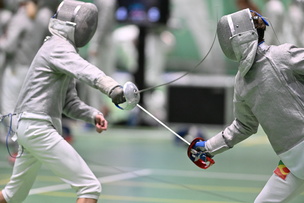
LiveView/Viewfinder
LiveView issues go hand in hand with shooting speed.
I didn’t catch the LiveView lag in Nikon Z9 display too. Even though the electronic viewfinder does not amaze with its resolution (the standard is 3.69 million dots today), it boasts an ideal working speed.
The image in it has a high refresh rate, no strobe, and also has a very high brightness and contrast. There is a simpler definition behind these dry technical descriptions: it is as close as possible to the image in the optical viewfinder!
And these are not all the advantages of an electronic viewfinder.
There is no blackout in it. That is, even during shooting, there is no darkening, blinking or freezing of the picture. And it’s really convenient.
As for the screen, its design surprised me. The screen can be easily tilted up or down with one hand, which is very convenient for dynamic shooting. But in the Nikon Z9, the design was supplemented with a hinge that allows you to tilt the screen to the side as well.
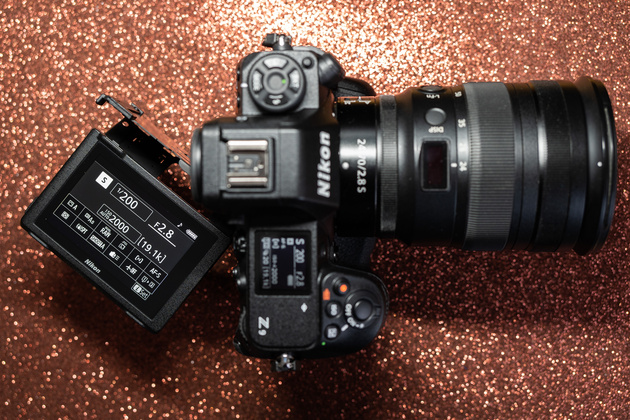
Now the camera allows you to shoot vertical shots from low points without any inconvenience. The hinges are made of moderately thick metal parts and instil confidence.
This design may not look as elegant as the fully tilting screens of amateur cameras.
But you definitely can’t deny it when it comes to the speed of work and ease of interaction. In any position, the screen doesn’t block access to either the buttons or connectors and is operated with one hand.
Nikon Z9 in Action
Autofocus
The Nikon Z9 autofocus system is perhaps the main reason why it was worth abandoning the DSLR design of the camera. The camera has to see with each of its 45.7 million pixels what is happening in front of it, and focus itself, and not bother the photographer. And Nikon Z9 can do it.
But let’s start from the very beginning…
Focusing is carried out directly on the sensor according to the hybrid principle (phase + contrast AF). System sensitivity is -6.5 to +19 EV in “normal” mode, with the lower limit extended to -8.5 EV with Starlight View at ISO 100, f/1.2.

The specs list 493 AF points, but you need to be careful here: we are talking about the number of positions of the manually selected AF point. Naturally, the camera uses a much larger number of sensors that cover most of the frame.

Throughout my testing, I literally had to select the autofocus area manually several times.
In most situations, it is enough to turn on the wide AF area, and the camera itself will determine the main subject. A recognition system created using machine learning technology helps it in this.
In the menu you can choose what exactly you are going to shoot: people and animals, or vehicles. In the second case, we are talking about sports scenes: car rallies, motorcycle races, and the like.

During the test, I gave the camera the opportunity to work with completely different subjects. And the Z9 deal with all of them perfectly.

Let’s start with the most familiar: the face and eyes of people.
Thanks to the high resolution of the sensor, the autofocus can find not only faces, but also eyes on very small planes. And that’s impressive!


The helmet on the face doesn’t bother the recognition system at all. If the eyes are not visible, the camera knows for sure: in front of it is the person’s head. The focus will be exactly where you need it.

With animals and birds, too, no problem. If the bird is looking at you from the front, the focus will be on the eye, not on the beak.



I always try to put the athlete and his emotions first.
But if you turn off face and eye detection, the camera focuses confidently, for example, on a motorcycle and its details. In addition, you can always set the AF point manually by touching the screen or using the joystick.

I would also like to mention 3D tracking, which first appeared in Nikon mirrorless cameras.
The function is well known to owners of Nikon DSLR cameras. It works like this: the autofocus area is preselected, which is aligned with the main subject. After half-pressing the shutter button, the camera continues to track the selected subject, using all its intelligence.

It would seem that this is an unnecessary complication, because there is automatic object recognition. But try shooting under conditions where two or more of the same objects appear in the frame. For example, uniformed athletes.

In the 3D tracking mode, I shot fencing, choosing in advance the athlete on whom the focus should be. And then the camera continuously kept him in focus until the shutter button was pressed (at least throughout the entire fencing fight).

During the test, I used both the Z-lenses created for the mirrorless mount and the Nikon AF-S 300mm f/2.8G IF ED VR II from a DSLR camera mounted via an FTZ adapter. I had no complaints about speed and accuracy using either glass.

Stabilization
The built-in 5-axis image stabilizer based on sensor shift is an important difference between the Nikon Z9 and the brand’s top DSLRs. Stabilizer performance is claimed to be 6 stops.

In my test, I was able to get sharp images with shutter speeds of up to 2 seconds with a wide-angle lens (21mm equivalent in DX mode) and up to 0.5 seconds with a 50mm lens in FX mode.

The effective operation of the stabilizer is clearly visible at shutter speeds up to ⅒ – ⅕ seconds. This is a really safe range in which the camera handles slower shutter speeds with confidence.
At shutter speeds of the order of ⅓ – ½, the number of sharp shots in the series decreases, and it is better to make the maximum possible number of takes.

White Balance
Nikon Z9‘s automatic white balance has also been refined using machine learning algorithms.
The result is especially noticeable when shooting with the setting to preserve the lighting ambience. The camera doesn’t try to make white white, but carefully conveys those shades that the human’s eye saw.

Battery
The Nikon Z9 uses a new EN-EL18d battery, but is backward compatible with other EN-EL18 batteries. Batteries EN-EL18b and later support USB charging in the camera.
So there is no fundamental difference whether to charge the battery inside the camera or in an external charger.

At first glance, the declared resource of one charge is shockingly small: about 700 frames according to the CIPA method. But we shouldn’t believe everything we see written on paper.
The specifications also include a figure of 5310 for continuous shooting. And this is much closer to the truth!
Our test results confirm this figure. When working with high-speed shooting, it was possible to take up to 8000 frames in 4 hours, without draining even half the battery. And this is at near-zero temperatures outside!
Ergonomics and Control
The Nikon Z9 form factor is exactly the same as classic reporter DSLRs like the D6 or D5. No one is ready to abandon proven ergonomic solutions: neither the photographers nor the manufacturer.
The camera has an integrated vertical grip, and the main controls, including the control dials and the autofocus joystick, duplicated for the vertical grip.
Visually, the thickness of the case has also decreased, but the overall size has become less by only one and a half millimeters, primarily because of the grip of the handle.
The case is still made of magnesium alloy and has the necessary protection from dust and moisture for professional work. The instructions also officially stated the operating temperature range up to -10 degrees Celsius.
Most other mirrorless cameras only have a stated range of up to zero degrees.

The location of the controls is much closer to the mirrorless “brothers” than to the DSLR “grandparents”.
So, in Nikon Z9 there are no buttons left to the left of the screen, now they are scattered around the body. However, it won’t be difficult to get used to the new location: everything is thought out and logical.

All buttons are large enough and spaced a great distance so that the camera is comfortable to work even with gloves. November provided us with the opportunity to check it out.
There’s even a dedicated touchscreen mode for camera operation in winter gloves:

We especially want to emphasize the i button, duplicated for vertical and horizontal grip. Don’t underestimate its importance.
It brings up a quick access on-screen menu, which the photographer or videographer can form himself from the 12 most popular functions and settings. Moreover, for the photo and video modes, the i menu is configured separately.

Most of the buttons can be reprogrammed, and there are a lot of them on Z9. For example, on the front panel alone, there are three programmable Fn buttons in the right-hand zone.



The control body responsible for controlling autofocus modes has been significantly changed. No more selectors! It’s just a button now. Press and select the autofocus mode using the control dials.

The shutter mode, burst mode, bracketing, flash and shooting mode settings are grouped to the left of the elevation of the viewfinder. It’s pretty easy for an experienced photographer to figure them out, even without instructions.
And on the right side of the top panel is a monochrome status display.

Frankly, during the test, I never looked at the monochrome display at the top. I could see all the necessary information in the viewfinder or on the main screen.
However, many professional photographers are used to traditional status displays and are not ready to give up on them. Though a small surprise awaits them: the display began to look different, as in many modern mirrorless cameras.
In terms of the interface solutions in the camera, everything is according to the principle that every little thing can be customized. The number of fine adjustments is simply off scale.



Even for displaying information on the display and viewfinder, there are several customizable templates. Obviously separate for photo and video.



There are also some very interesting solutions.
For example, you can keep the button illumination always on. And the screen has a special mode of warm colors, which does not blind the photographer when shooting at night – the whole image is converted to black and red.

Concluding the section about the interface features, it should be noted that the menu has been updated.
I mean its structure has remained the same, but items that have only two positions – on or off – now have a visual and convenient “switch”, as in modern operating systems. All connection settings were placed in a separate tab, because in Z9 there are really a lot of them.

Input/Output
The set of Nikon Z9 connectors is traditional for professional cameras.
For example, there is a standard RJ-45 network with 1000BASE-T support. Videographers will appreciate the full-size Type A HDMI output (supports up to 8K resolution!), a phantom-powered stereo microphone input, and a headphone output. USB is a Type C connector with PowerDelivery support.

The front panel has a classic sync contact and a 10-pin proprietary remote control connector.

The camera supports the use of XQD (Type B) and CFexpress (Type B) memory cards. Both slots for memory cards are universal.
Network Interfaces
Nikon Z 9 has on board a Wi-Fi module with support for IEEE 802.11 b/g/n/a/ac standards. This is good news because photographers used to have to use an external WT6 transmitter.
Supported bands are 2.4 and 5 GHz. Output power is declared at 8.4 dBm for 2.4 GHz and 9.0 dBm for 5 GHz. That is, the Wi-Fi module is noticeably more powerful than, for example, in the Nikon Z7 II.

In practice, the increase in Wi-Fi performance is clearly visible.
For example, by connecting the camera to a smartphone using the SnapBridge app, I easily deconstructed a huge shot of several thousand frames and chose the most effective shots. Even working on a relatively powerful computer with a fast card reader, I spent more time on selection.



Bluetooth supports specification version 5.0 and has a declared power of 2.9 dBm (1.4 dBm for Bluetooth Low Energy).
Nikon has seriously updated the software for the release of this camera.
Nikon Z9 will work with the NX Field app, which allows you to control multiple cameras remotely from your smartphone, synchronize the shutter release. The NX MobileAir utility is on the way, which will allow you to connect a smartphone and a camera with a cable for fast transfer of images via 4G or 5G, including in the background.

The Nikon Z9 body has a built-in GPS/GLONASS /QZSS receiver.
You can limit yourself to a simple setting of the exact time according to satellite signals, or you can record geodata for each frame taken and keep a log.
Image Quality
The conclusions about the image quality were made on the basis of working with a pre-production sample of the camera and firmware version 1.00. Serial samples may vary.

Detail
We have already been able to evaluate the potential of the optics of the Nikon Z mirrorless system in our other tests. Top lens models delight with a sharp, ringing picture.
So on a 45-megapixel Nikon Z 9 sensor, they 100% expose their potential. The detail in the pictures is sufficient not only for large-format printing, but also for a very daring cropping.

The “excess” of detail can be used up in a very practical way – for shooting with a crop in DX mode (for example, when there is not enough focal length).
Photos are taken with a resolution of 19.4 megapixels, which is sufficient for most tasks. I shot almost all of the motocross material this way, because it was not always possible to get closer.


High ISO
For a reportage camera, 45MP is high resolution even by the standards of 2021.
On the one hand, it is quite understandable where this figure came from: it is dictated by the 8K video shooting implemented in the Z9.
On the other hand, won’t these 45 megapixels make too much noise?
The intrigue is reinforced by the fact that the sensor description doesn’t mention the back-illumination technology, which is so fashionable now… So we wait for the evening time, put the camera on a reliable tripod and shoot the test at all ISO values.

The minimum expandable value for the Nikon Z9 is ISO 32, which allows long shutter speeds.
At the same time, the dynamic range in the highlights is slightly reduced, but in general, ISO 32 is fully operational, and, moreover, it is absolutely free of noise. The detail of the picture is very high, and the picture looks absolutely smooth.



The lower “real” value for light sensitivity is ISO 64. It is also impeccable in terms of technical quality. The situation is similar at both ISO 100 and ISO 200.



The ideal smoothness of the picture gradually begins to give way to fine monochrome noise after ISO 400. However, up to ISO 1600 inclusive, it remains almost invisible, given the initially high image resolution.



At ISO 3200, the first clumps of noise appear in the shadows, which are noticeable when the photo is enlarged, but don’t have a decisive effect on the final quality. Such frames can easily withstand large-format printing over A3.
At ISO 6400, contrast in the shadows begins to decrease, but this ISO value remains fully functional.
And only ISO 12800 for the first time makes the photographer think about the balance between light sensitivity and technical quality: the level of noise rises, details and midtones in the shadows degrade. However, even this ISO will allow you to print images in A4 or even A3 without additional processing.



ISO 25600 exhibits both noticeable noise amplification, detail degradation, and color degradation in dark areas. It sounds scary, but in practice, ISO 25600 is workable if large-format printing is not required. For posting on the web or printing A4 or smaller pictures, these are suitable.
The expandable values ISO 51200 and 102400, unfortunately, can no longer boast about high technical quality and are more of a reserve in case of emergency.
All in all, Nikon Z9 pleasantly surprised, becoming one of the few cameras, the entire real ISO range of which can be called fully operational.
Dynamic Range
Traditionally for Nikon, the new Z9 demonstrates very good shadow margin in RAW. You can safely increase the exposure by three stops, revealing new details. The most interesting thing is that the noise level is almost not increased.

An alternative to this processing can be the use of Active D-Lighting when shooting contrasting scenes in JPEG.

On the contrary, in the light areas the supply is very meager. You can save about one stop from overexposure. Decreasing the exposure further in the RAW converter doesn’t produce any results.
Nikon Z9 itself “knows” about this feature, so the automatic exposure control tries to prevent overexposure, sometimes slightly reducing the brightness of the picture. This exposure metering setting is traditional for many Nikon cameras and doesn’t raise any questions.
Electronic Shutter and Rolling Shutter Effect
The absence of a mechanical shutter is certainly a bold move by the Nikon Z9 developers. Photographers have enough complaints about modern electronic shutters. There are both rolling shutter and stripes when working with artificial light.
Have a look at the image below where the spokes of the motorcycle wheel spinning at high speed remain perfectly straight in the photo:

When shooting fencing with artificial lighting, I have never encountered the problem of stripes (moire) in the photo.

In a little more than a week of testing the Z9, I took about 20,000 frames with this camera, and didn’t encounter any of the voiced problems. The electronic shutter supports flash speeds up to 1/200 in normal mode and faster in high-speed sync mode.
That is, there are no restrictions compared to mechanical shutter cameras.
Nikon Z9 Video Shooting
A lot of attention has been paid to video shooting with Nikon Z 9.
Nikon understands that video is rapidly replacing static photography. They also understand that other manufacturers have made great strides in the direction of hybrid cameras. The Nikon Z9 specifications are impressive and clearly indicate that the camera should be a top-class hybrid model.
But there is one caveat:
It’ll be come a top model for videos after the firmware update, which was in 2022. It is after this update that Nikon Z9 will be able to record 8K @ 60fps to the memory card in its own N-Raw format, which will be twice as efficient in volume as ProRes RAW.
At the time of this writing, the Nikon Z9 supports 8K video recording with H.265 compression at 25/30 frames per second. Naturally, at the same time, autofocus, all expoautomatics, and the stabilization system fully preserve the work.
There are no log gamma profiles, but there is a low-contrast Flat color profile, convenient for post-production. It is possible to shoot with 10-bit and 4:2:0.
If we talk about 4K, then the camera is very strong. The limit is 4K shooting at 120 fps, naturally with autofocus. 10-bit is also supported.
But you can go further. If you control appetites and lower the requirements to 50/60 frames/s, the Nikon Z 9 will allow you to record in 10-bit ProRes 422 HQ.
In terms of interface solutions, it should be noted separately implemented video mode with its own pool of saved settings. Switching is carried out by a lever under the thumb.
For the video mode, you can create a separate on-screen menu I (mentioned earlier), and reprogram the buttons, and, in general, configure everything in the camera.
A convenient and practical solution that clearly demonstrates the dual nature of this camera… or video camera?
Is Nikon Z9 Worth Buying? (Final Thoughts)
The Nikon Z9 is an iconic camera, the brand’s first truly reportage mirrorless, the first professional camera without a mechanical shutter.
And this is not just a demonstration of technical capabilities, but a camera ready for the most severe tests with unique functionality and a well-thought-out interface. I tested a pre-production sample, but didn’t even make me feel like it was a ‘raw’ product.
The Z9 has high-speed performance, which allows you to shoot up to 20fps in RAW at full 45.7MP or up to 120fps in JPEG at 11MP.
And these are not some special modes, full of restrictions. This is an absolutely normal operating mode for the camera, when autofocus confidently works out before each shot, there is no blackout or lag in the viewfinder, the buffer is almost infinite.

The autofocus system is smart and fast, to the point that a photographer can refuse to select a specific point or zone in 99% of cases – everything is done automatically.
And for the most difficult cases, there is a 3D tracking. In that case, it is enough for the camera to indicate the main object in the frame once.



Oddly enough, the high resolution of the sensor practically didn’t limit the work at high ISO.
The real sensitivity range is limited to ISO 25600, but it is fully operational and applicable in practice. High quality pictures for large format printing can be shot up to ISO 12800. There is a good headroom in the shadows.

The Nikon Z9 has become a true hybrid camera, ready for both stills and videos.
The maximum resolution is 8K @ 30fps, but with a firmware update in 2022, 8K @ 60p in RAW will be available. You can shoot in 4K at 120fps, and at 60fps, 10-bit ProRes 422 HQ is already available.
Does the Nikon Z 9 have any downsides?
Yes, but they can be characterized by a simple phrase: there is no limit to perfection.
Pros
- very high speed of work in all aspects
- very accurate and fast autofocus
- the algorithms for recognizing the focusing object work perfectly
- stable and confident work with AF-S lenses
- almost infinite buffer with fast memory cards
- LiveView without lag and blackouts
- the ability to shoot up to 120 frames/s in JPEG
- distortion-free electronic shutter and flash support
- the possibility of absolutely silent shooting in any mode
- effective built-in image stabilization
- very high resolution
- working ISO up to 25600 units
- good headroom in the shadows in RAW
- thoughtful management
- 4-direction tilting touch screen
- very bright and high contrast viewfinder
- high speed wireless connections
- 8K video recording
- 4K video recording up to 120 fps
- good autonomy
Cons
- no support for gamma profiles in video
- small headroom in highlights in RAW
- at the time of the article’s release, the maximum video capabilities are not available
- quick, but not instantaneous switch on of the camera
Where to Buy Online
- Amazon
- BH Photo Video
- Adorama (financing may be available)
Nikon Z9 Review 2025: Your Thoughts?
This was an impressive review done by George, one of the top experts at ProPhotos.ru which hopefully answered your question “Is Nikon Z9 worth buying?”.
In case it wasn’t obvious, YES, it is!
Now we’d like to hear from YOU:
- What do you think about Nikon Z9 in 2025?
- If you’ve never held this gear, what stood out for you in this Nikon Z9 review?
- If you’ve already had a chance to play with this camera, please share your feedback! What else could you add to this?
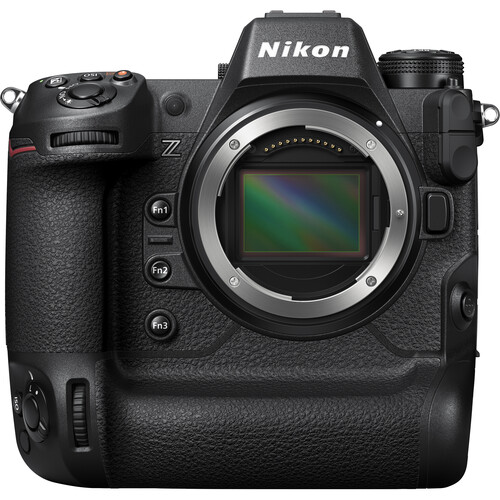
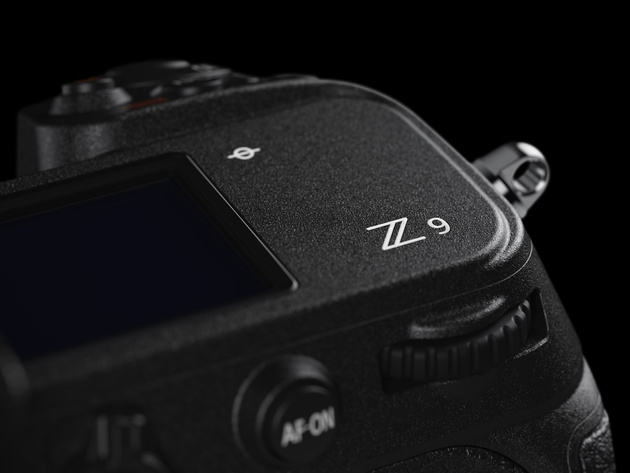
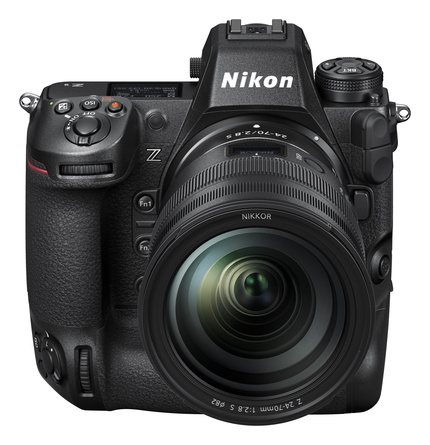
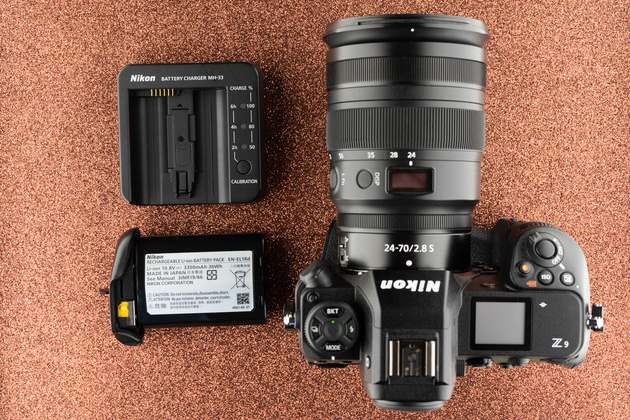

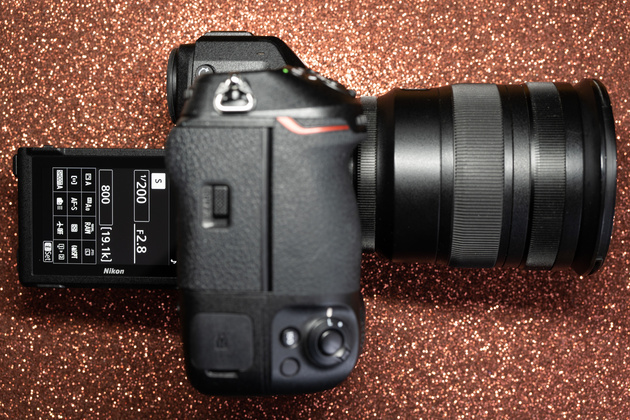
This review is awesome! Thanks!
Glad you enjoyed it, Nunta! 🙂